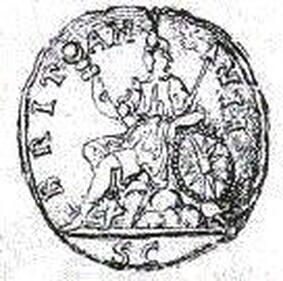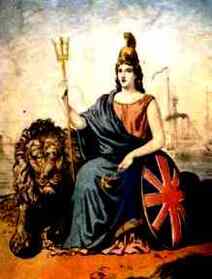
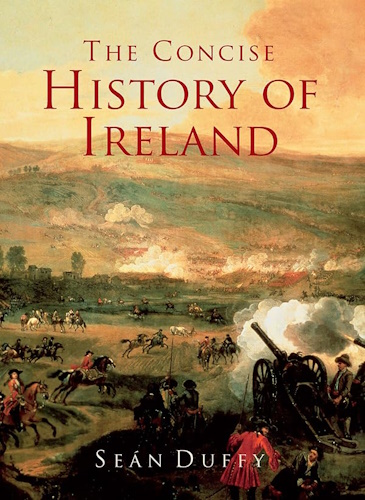
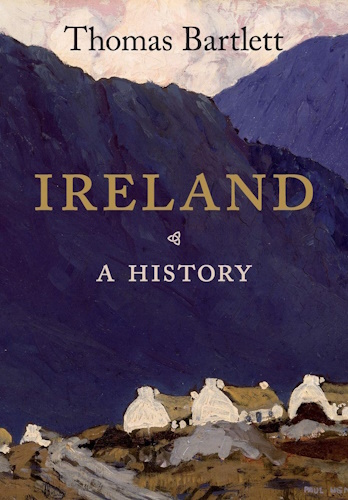
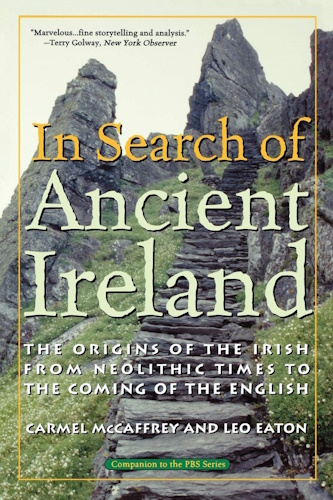


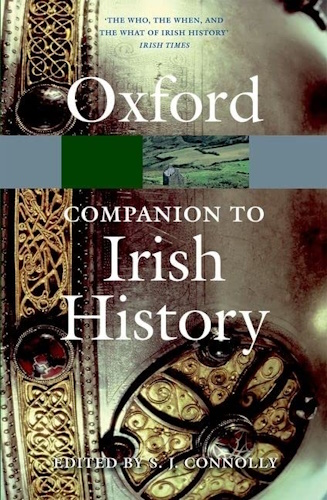
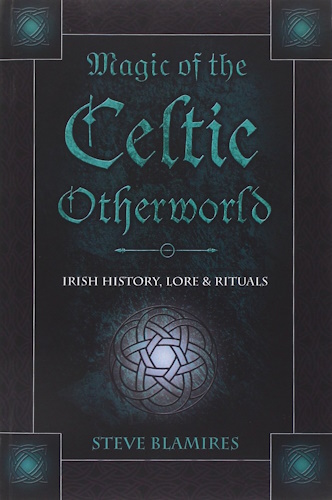


Etymology: Key to the Past
Appendix XVI to Volume II
of
The Irish Origins of Civilization
by
Michael Tsarion
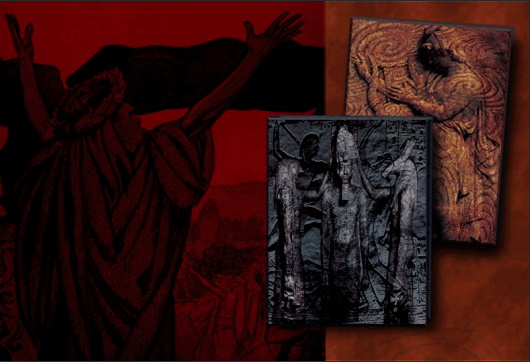
![]()
![]()
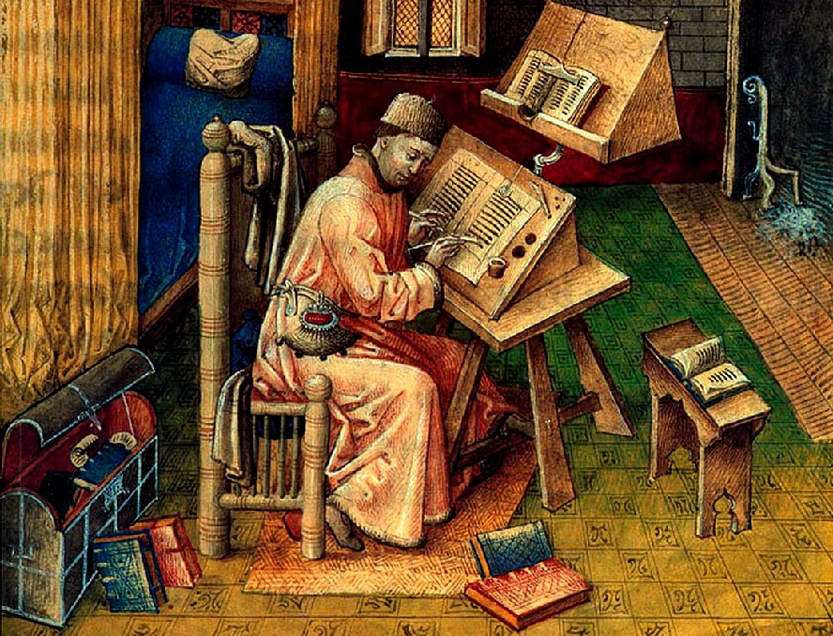
Introduction
Cities may burn, floods may destroy, pestilence may kill, and wars may ravage, yet a word may survive – Henry Binkley Stein (Thirty Thousand Gods Before Jehovah)
The subject of etymology concerns the various meanings, both denotative and connotative, of words. This vitally important subject is well worth serious study. As we delve into this fascinating subject we do well to bear in mind the wise counsel of alternative historian Conor MacDari:
One of the easiest and most effective ways to promote a deception is by the misspelling of words...In the translation from the original Irish scriptures, the Irish names were changed by the practice of the most astute cunning in order to conceal the source from which they were obtained. In many instances these names have been distorted and misspelled to such an extent that it has required long sustained and patient effort to trace them to their true and proper form - (How The Bible Is An Irish Book Altered And Adapted By British-Roman Transcribers)
The opening line of the Gospel of John reads "In the beginning was the word..." There is a certain humor here. Perhaps the author added the line with a sly wink because, after all, it is his word that begins the book, not God's. Indeed, all books open with words, just as most thoughts are sooner or later put into words, in one language or another.
Words are magical. We know what language and speech are, and think we know what they are for. But do we really know or are we misled on this most fundamental matter? Why do humans possess the ability to speak so fluently and subtly? No other species comes close, certainly not our alleged cousins among the primates. But is our penchant for expression with words based on our awe and mimicry of the call of animals and song of birds?
The sounds of the alphabet of one of the world's oldest languages, Sanskrit, is directly based on birdsong. The shape of the letter "A" replicates the peak of a mountain on which the gods supposedly reside. The letter "O" is based on the shape of the lips when this sound is pronounced. The shape and sound of the letter "S" is based on the shape, movement and hiss of snakes. The letter "U" represents the womb and holy receptacle. The letter "M" is based on the movement of water. "Z" is the lightning flash. Apparently our language is something created for us not by us. What we know as language is Nature speaking to herself through us.
The ancient Hyperboreans (the Arya or Druids) knew all about this. They understood the power of words and of the wordsmith. Language was the means by which one adept passed on the details of the magical canon. When we remember the debt we owe to Homer, Shakespeare, Cervantes, Bronte, and other great writers, let us also remember the debt they owed to words and letters. Although the poet may be prince, the word is emperor.
Among the ideas which were borrowed by Judaism from the Persian religion, belonged those connected with the mediatory "Word." As the creative power of the Godhead upon earth, the expression "the Word" had already appeared in aphoristic literature. Under Greco-Egyptian influence the term "wisdom" (sophia) had become a naturalized expression for it – Arthur Dewes (The Christ Myth)
As the great philosopher Owen Barfield knew, words have largely lost their magical connotations, inflections and qualities. The shallowness of today's "swing" languages mirrors the shallowness and artificiality of human thought and lifestyle. At least this is the case for unawakened human beings. It is certainly not the case for the rulers of mankind, the overlords who can't afford to forget the power of the words they so artfully employ. It is by way of the magical power of words that their cruel hegemonies are gained and maintained. The "Hitlers" of our world are orators first and foremost, even though the words they speak may be composed by more shadowy string-pullers. By gaining control over words they win control over mind and world.
Literacy in the ancient world was mastered by a very small part of any given society. Small farmers and shepherds had no use for writing, nor did the local patrons and strong men who typically controlled the small patronates...Imperial governments, however, did have use for it – Thomas L. Thompson (The Mythic Past: Biblical Archaeology and the Myth of Israel)
.
Monogenesis
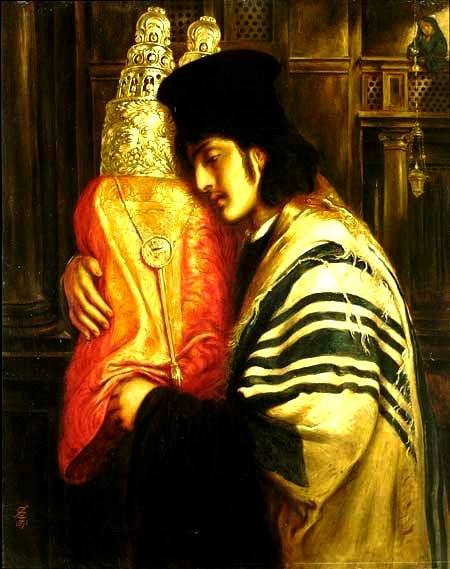
The Arya
...the Papyrus Sallier reveals that only the "Shepherd King" has a council of learned scribes, while the Theban's councilors are all military leaders. This is in itself evidence that the Egyptian hieroglyphic writing began in the North, and the circumstance that no early and greatly inferior status of the said writing has been discovered seems to point to the importation of letters into Egypt from abroad - S. F. Dunlop (The Ghebers of Hebron, 1894)
As far as I am concerned there were at least half a dozen Western Caucasian groups in the ancient Middle East from before 5,000 BC. Ancient Irish and Scottish annals assert that Irish-Scythians were welcomed in Egypt before and during the reign of Akhenaton. L. A. Waddell, Comyns Beaumont, Herbert Wendt and Edward Malkowski leave us in no doubt that the Phoenicians (among the first settlers in ancient Egypt) were Caucasian Goths. Given that the Phoenicians are Canaanites were linked, the likelihood is that the Canaanites were originally of western ancestry. That both groups worshiped fair-skinned, fair-haired goddesses also supports this contention. That a great many present-day scholars wish to completely downplay the role of the Canaanites also offers strong support to my thesis concerning the races of the Levant. And given that several cyclopean ruins (such as the Balbeck Stone) in Northern Syria, Lebanon and Egypt, etc, remain unexplained, we see why academics continue their campaign of obfuscation when it comes to prehistory. (Here for more on the Canaanites.)
During this century, the understanding of Yahweh has been shaped strongly by the study of Canaanite deities - Mark S. Smith (The Early History of God)
Despite the long regnant model that the "Canaanites" and Israelites were people of fundamentally different culture, archaeological archaeological data now cast doubt on this view. The material culture of the region exhibits numerous common points between the Israelites and "Canaanites" in the Iron I period (ca. 1200-1000) - ibid
With the change in perspective concerning concerning Israel's "Canaanite" background, long-held notions about Israelite religion are slowly eroding - ibid
Israelite religion apparently included worship of Yahweh, El, Asherah and Baal - ibid
The extensive use of "high-places" and hilltops for worship among both Canaanites and early Israelites demonstrates that their religion was identical in many ways to that of western tribes. Their reversnce for fair-complexioned goddesses and widespread erection of standing stones also leads us to the truth of the matter. These ancient Near-Eastern tribes also venerated groves and trees for centuries, before later post-Exilic priesthoods gradually banned the practice. There is also evidence from several Old Testament scriptures that serpent worship was extremely common, the serpent representing the child of the tutelary goddess, the god ruling in her name.
The emerging truth about the connections between early Israelites and Canaanites points West and leads us in the right direction. It obliterates most of the conventional ideas about the Israelites and their penchant for "monothesism," and shows that there was a lot more to their modes of worship than previously conceded.
Going much further than wary academics, I conclude that other pre- and post-dynastic Caucasian visitors and settlers included not just Canaanites, but Luvians, Ghebers, Gutians, Chaldeans, Amorites, Medes, Philistines, Idumeans (Edomites), Shilonites and Egyptian Amenists.
This includes the notorious Hyksos Shepherd Kings (or Shasu), true ancestors of biblical Jews and Israelites.
I should also include the extremely ancient Shemsu Hor or Disciples of Horus, described in the most ancient Pyramid Texts of Heliopolis and in texts and inscriptions found at the Temples of Dendera and Edfu. (Here for more...)
There are also petroglyphs and records of white, bearded types frequenting Libya and central Africa before 5,000 BC, before the Sahara became a desert. The depictions are remarkably similar to those found of Caucasians in Babylon. Most striking of all are the remains of whites discovered by Sir Grafton Elliot Smith before the waters of the Aswan dam conveniently destroyed the evidence. (Here, Here, Here & Here for more...)
As ancient Pyramid Texts reveal, these predynastic Westerners - known as the Sages, Horites or Disciples of Horus - brought with them their cultural elements, arts and sciences, and their esoteric language. Indeed, the great colleges of the Scythian sages were once well known throughout the world. It is only because of a sinister and persistent campaign of deception that these facts have been concealed and denied. (Here, Here, Here and Here for more...)
Egyptian records reveal that the Hyksos nobility operated advanced colleges specializing in language. In these colleges (mostly in Lower Egypt) seniors bore the titles Jew, Judite, Levite, Israelite, Hebrew, etc, that later appear in different guise, denoting races instead of castes and ranks.
The most illustrious of these Westerners - the Atonists (Israelites) - eventually returned to their ancestral homeland after their forced expulsion from Egypt. Their great queen Meritaten lies buried in Country Kerry, Ireland, and the legends of their coming are not legends. In my mind no greater evidence exists supporting the Irish origins of civilization thesis.
The peoples and kingdoms referred to in the Bible, and supposed by commentators to be in the East, are actually to be found in the West - Anna Wilkes (Ireland: Ur of the Chaldees)
There is no evidence that the civilization of Egypt was developed in Egypt itself; it must have been transported there from some other country - Ignatius Donnelly
...from 7,000 to 10,000 years before Christ, there lived a people in that region, which, as the bees send off in the spring their successive swarms, poured out its streams if emigration all over Europe, and into India, Bactria, Media and Persia; everywhere conquering the indigenous races, and becoming the Celts of Spain, Britain and Ireland, the Northmen of Sweden, Norway and Denmark, the ancient Goths and modern Germans, the Slavic and Lithuanian races, the Greeks and Romans, the Hindus and the Medians and Persians. You hardly utter a sentence of our English tongue without speaking some word which was spoken in the same sense by that ancient people, ten thousand years ago or more - Albert Pike (Lectures of the Arya)
When we realize that the Atonists were actually covert Setians, dedicated to evil, we grasp the importance of uncovering their existence and understanding their closely guarded sinister doctrines and devices.
Irish (Aryan) Original
The Aryan languages, so called, are in all probability ramifications of the original speech of Europe - Anna Wilkes
The scanty relics of the Aryan languages of Asia Minor found in inscriptions and the glosses of Greek grammarians belong to the Western division of the (Aryan) family - Prof. A. H. Sayce
The Egyptians themselves claimed that their ancestors were strangers who in very remote times settled on the back of the Nile, bringing with themselves the civilization of their motherland, the art of writing and a polished language. They had come from the direction of the Setting Sun and they were most ancient - Diodorus Siculus (Ancient Greek Historian)
Anglo-Saxon in the same manner is largely a Keltic language. All the words that it contains, which are not traceable to one or the other of the Teutonic dialects are either from the Kymric or the Gaelic. What is called the Anglo-Saxon or more properly the Saxon, or Teutonic, may be looked upon as the father of the early English language, but the mother, or grandmother, is unquestionably the Keltic in one of its two great branches- Charles Mackay (The Gaelic Etymology of the Languages of Western Europe, 1877)
The authority of Matthew Arnold, Professor of Poetry in the University of Oxford, ougbt, on a subject relating to English poetry, to have great weight with the English reader; both because he is a man of great learning, especially in poetry, and is an impartial witness on this special subject of Gaelic learning. He declares that "rhyme is the most striking characteristic of our modern poetry as distinguished from that of the ancients, and a main source to our poetry of its magic charm of what we call its romantic dement; rhyme itself, all the weight of evidence tends to show, comes into our poetry from the Kelts" - ibid
Linguistic science achieved a great discovery when it established the fact that there was a continuous belt of languages from Iceland to Ceylon which were the variant forms of one mother-tongue, the Indo-European; but it must prepare itself for a still wider generalization. There is abundant proof - proof with which pages might be filled - that there was a still older mother-tongue, from which Aryan, Semitic, and Hamitic were all derived - Ignatius Donnelly (Atlantis: The Antediluvian World)
The Semitic languages also are all varieties of one form of speech. Though we do not know that primitive language from which the Semitic dialects diverged, yet we know that at one time such language must have existed...We cannot derive Hebrew from Sanscrit, or Sanscrit from Hebrew; but we can well understand bow both may have proceeded from one common source. They are both channels supplied from one river, and they carry, though not always on the surface, floating materials of language which challenge comparison, and have already yielded satisfactory results to careful analyzers - Max Muller (Outlines of Philosophy of History, Vol 1)
There is an abundance of legends and traditions concerning the passage of the Irish into America, and their habitual communication with that continent many centuries before the time of Columbus - Abbé Brasseur de Bourbourg (Introduction to the Popul Vuh)
Like Professor Waddell, eminent scholars such as Samuel Dunlop, and others, confirm that the language of the Jews was identical to that of the Phoenicians who had settled Egypt in the earliest times:
The Hebrew and Phoenician languages are practically identical - (The Ghebers of Hebron, 1894)
The Hebrew language was Phoenician - ibid
…the Phoenician language differs only in small details from Hebrew – Herbert Wendt (It Began in Babel, 1958)
All is explained when we realize that the Phoenician mariners were originally from the North-West. Originally, they were known as the Arcadians. They are also known to history as the Tyrians, Sidonians and Adonites. They were the builders of the Temple of Solomon. (See Chapter 7 of I Kings, and Chapter 2 of 2 Chronicles.)
Helena Blavatsky puts us right about the age-old fallacies concerning the Jews and their language. She rightly emphasizes that the Hebrew language was originally Egyptian:
The compilers of the Old Testament, as it exists in the Hebrew canon, know well that the language of the Initiates in the days of Moses, was identical with that of the Egyptian hierophants
In her monumentally important work on Astro-theology, The Celestial Ship of the North, Mrs. Valentia Straiton corroborates Blavatsky's findings:
The Jewish glyph and the Hebrew language are not original but are borrowed from the Egyptian and are considered sacred. Hebrew is composed of the hieroglyphics, symbols, and myths of the Egyptians and their gods
This strongly substantiates the theory that the "Hebrews" were once in Egypt not as slaves but as an educated, privileged nobility, a fact which shakes conventional history to its core.
We also learn from another preeminent scholars that the doctrine of the Kabala did not originate with the Jews:
The Hebrew Kabbalah, revelation of the Mosaic teaching, comes from Egypt and retains a kinship with this origin, although modified by the nature of the Jewish mission - R. A. Schwaller de Lubicz (Esoterism and Symbol)
The Jews, in imitation of the Pythagorean Institutes, made the Cabala their codex or Canon Law - Theophilus Gale (Court of the Gentiles, 1677)
In their excellent book Civilization One, Alan Butler and Christopher Knight consider the possibility of the parent language from which the majority of others may have descended:
In the 18th century the German philosopher Gottfried Wilhelm Leibniz suggested that all ancient and modern languages diverged from proto-language
This idea, called 'monogenesis,' sounds very odd but it is taken very seriously by many leading scholars. Anthropologist and writer Richard Rudgely has said the consequences of acknowledging a root language are mind-boggling. Such a language must be more than 10,000 years old and probably nearer to 15,000 years old. It is amazing that correspondences in language exist as far afield as the deserts of southern Africa, the Amazon rainforest, the Arctic and Europe. Linguist and writer Merrit Ruhlen has called the ancient original language, 'Proto-Global'
...academics as revered as Lord Colin Renfrew, Disney Professor of Archaeology at the University of Cambridge, have concluded that every group of humans in the world once spoke the same language - and that the date of this convergence was as recent as 15,000 years ago
These experts follow the pattern of words that are shared by peoples who have no known connection, yet they stop short of asking how such a thing can be true. Surely, if everyone spoke the same language there must have been a high level of regular contact between peoples around the world, at a time when, in the modern comprehension of prehistory, this would have been impossible
Many past scholars of ancient languages had no doubt that a language of Western origin predated all others, and that remnants of it were to be found in the languages of high cultures such as that of Persia, Scythia, India, Phoenicia, Chaldea and Egypt, etc.
We have it on the authority of a Captain Davies, and Lieutenant Roberts of Hawcorden in Flintshire, and from a MS. entry in William Penn's journal, evidence collected by the famous Dr. Owen Pughe, that the tribes of the Illinois, Madocautes, the Padoucas and Mud Indians spoke the Welsh language - W. Winwood Reade (The Veil of Isis)
In the book by Allison E. Drake, named "Discoveries in Hebrew, Gallic, Gothic, Anglo-Saxon, Latin, Basque, and other Caucasic Languages"...Mr Drake analyzes 795 Hebrew words and relates them logically to some of the Aryan words of the various languages showing beyond doubt a kinship of the Hebrew to the Aryan - Brinkley H. Stein (The Rod of Mercury)
The Azilian "alphabet" stones, some 9,000 years old. Discovered in the south of France, archaeologists are still debating if they are writing or not. They do bear an uncanny resemblance to scripts which were developed thousands of years later. If it is writing, then it is the oldest on earth - Arthur Kemp (March of the Titans)
Another important clue connecting the elders of Egypt and Ireland concerns the symbol of the serpent. As I show in Volume One, the Egyptian adepts and kings utilized the symbol of the serpent. Known as the Uraeus it appears on their temples, shrines, hierograms and headgear. Interesting and suggestively, it was also employed by the Druids, the Magi of the West. Indeed, the Druids were known as the Gnadr and the Naddreds, referring to the adder or viper, the serpent ultimately serving as a goddess symbol. (Here for more...)
In all cases the hierogram of the serpent represented spiritual nobility and high royal caste. Tara (seat of the high kinds of Ireland) was known first as Drumcain or Hill of the Serpent. Ultimately, the serpent emblem was the mark of the supreme goddess Wadjet, while for the corrupt and despised Hyksos nobility it denoted Apophis, the supreme serpentine goddess of the underworld. (Here for more...)
Apophis was the antetype of Set, and was a personification of the devastating comic phenomena we know as comets. (Here for more...)
The doctrines of the Druids and Amenists were despite superficial differences identical. Both cultures venerated the stars, goddess, serpent, number three, and both taught the concept of the transmigration of souls. The supreme god of the Amenists, Amen Ra, was symbolized by a glyph resembling a standing stone with the sundisk above it, rather like the letter "i." Such stones are found all over Britain and the West, all dedicated to charting the movement of the sun. A coincidence of course.
...many of the officials, courtiers, and priests, representing the upper class of Egyptian society but not the royalty, looked strikingly like modern Europeans, especially long-headed ones - Prof. Carleton Coon (The Races of Europe)
Geoffrey Keating, the venerable historian of Ireland, indicates that this name for Egyptwas reduced down to the name ‘Aeria' in later generations, and used for the island of Ireland...the current name for Ireland is actually a corruption of an original name for Egypt - Ralph Ellis (Scota: Queen of the Scots)
.
The Holy Art of Deception
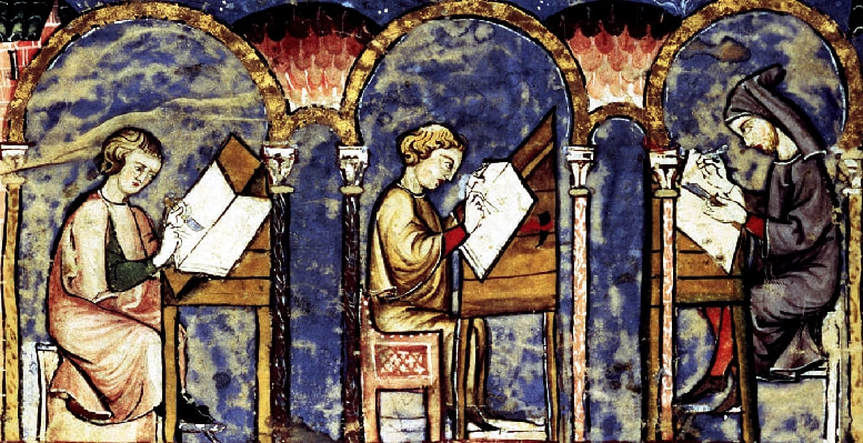
Deception is a holy art. This is because everything we commonly consider holy exists because of deliberate age-old deception.
I cannot emphasize enough the manner in which words, terms, titles and place-names have been manipulated by mythmongers in the pay of unseen superiors. The Judeo-Christian Bible, for example, is replete with this form of deception. Readers and believers accept the innumerable personal names and place-names literally, and rigidly resist any opinion or argument contradicting officially accepted translation and interpretation of said scripture. Nevertheless the greatest antiquarians and historians - great because of their lack of bias - knew there was more to Biblical allusions than most laymen suspect.
As Samuel F. Dunlop explains:
As in certain amusements persons were expected to guess a word or a story from slight indications half concealed in the conversation the Semitic author of Genesis has left scarcely any traces by which to connect his narrative with the Mysteries; and yet this method has been selected to introduce the readers of scripture to the history of the 'Chosen People' - (The Ghebers of Hebron, 1894)
How many realize that terms such as Semite, Shemite and Hamite, etc, refer directly to Egypt? These are simply inept allusions to the Land of Khem, Misraim or Misr, meaning Egypt. When referenceing the Israelites and Jews it is used deceptively. In reality it signifies only that they were racially mixed and intermarried with Egyptians, Canaanites, Amorites, Syrians, Arabians, Babylonians and so on. It also relates to their language.
When it comes to words, how many of us realize that letters such as "L," "H" and even "I" served as prefixes, in a similar manner as today's common word "the?" How many of us realize that, according to one scholarly source, the word "Jew" derives from Auda or, alternatively, Iauda? The English letter "I" was often interchangeable with "J," the latter being introduced at a much later date and unknown to Egyptians and other ancient peoples. There are many instances of this transposition, and the word "Jew" is but one of them. We see that Iauda becomes Jauda, Juda or Jew. (In Volume One I show that the origin of the word Iuda or Jew derives from the yew tree and its symbolism).

The word Audi or Auda was one of the original derivations of the modern appellation "Jew" or "Judah." It was most likely the original name for the land of Judah. Its earliest usage is Aryan or Druidic, signifying the sacred yew tree.
(Here for more on tree symbolism and Judeo-Christianity)
How many of us realize the importance of geographical location? What happens to a place-name after it is adopted by a particular clan simply to identify themselves as residents of a certain geographical region? What if that same region was first given its name by a forgotten antique race with no connection to the later settlers who adopted the name as their own?
A person or tribe might, for example, define themselves as "Egyptian" because they have lived in the land of Egypt for a generation or more. Are we to assume they are as "Egyptian" as the forgotten people who first inhabited the land thousands of years previously, and who gave the Egypt its name? Of course not. Take the land of England for example. That name was given to the land by the Anglo-Saxon invaders in the fifth and sixth centuries AD. It signified their land of their people, not the land of those who were resident there before, or of those after their time. However, since the days of the Angles and Saxons, every settler and immigrant to England blithely refer to themselves as English, or at least as residents of England. Does this mean they too are Angles, Jutes or Saxons for Western Europe. Of course not. It does not even signify that their ancestors were Angles, Jutes or Saxons. It is just a term that has been adopted for descriptive purposes.
What we are describing is the situation with the titles Jew and Judite. These terms were once associated with a physical location. Specifically, Judah or Judea defined the region occupied by the wise ones or Magi - the Western elders who had colleges the world over. Whether the word originally denoted yew trees, rivers, fire, hierophants or initiated ones, it does not signify the people who adopted it as a title later in history, due to the fact that their ancestors may have inhabited a location bearing the illustrious name.
One primary reason why problems of association and correct attribution arose is due to deceptive "historians" such as Josephus Piso, who - funded and directed by powerful shadowy aristocratic elites - worked to deliberately skew facts and misguide researchers of later generations.
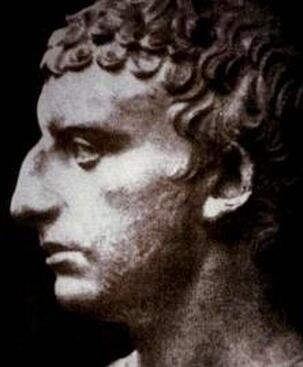
Josephus Flavius (37–100 AD) - or Yosef Ben Matityahu - was an aristocratic Jewish historian living in Rome. In an attempt to conceal the actual history of the "Jews," Josephus wrote that in his opinion they were descendents of Indian Brahmins. (See The Life of Flavius Josephus). Josephus was undoubtedly funded and directed by Atonists, that is, by the powerful descendants of the Order of Melchizedek or Akhenaton. These shadowy elites were members of the Gaonim, or "Princes of Light." In traditionally accepted terms, they were Sadducees and Pharisees of the highest order. To this day, their patronized lackeys concoct "histories" designed to deliberately conceal the facts we need to know about our past. Researcher and author Ralph Ellis has conclusively proven that Josephus and St. Paul (author of the Epistles, and so-called "biographer" of Jesus), were one and the same man.
.
What's in a Word?
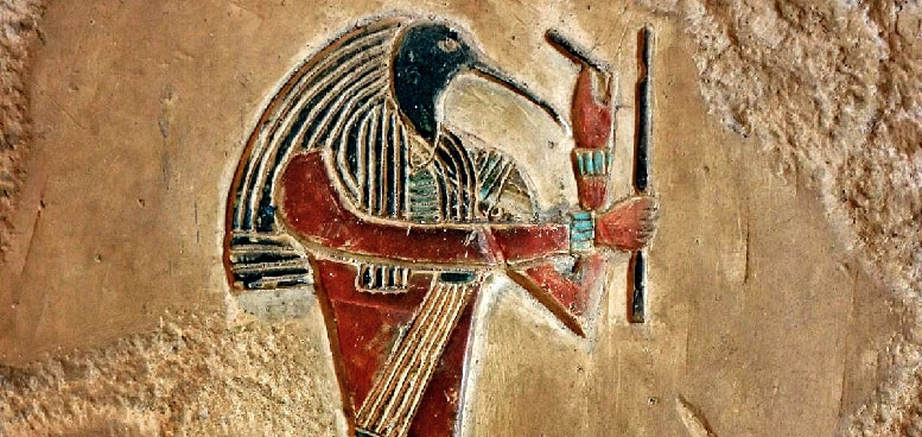
This peculiar liability of men to be deceived by words and names when they are presented in disguised and abbreviated, or unfamiliar, forms of spelling has been taken full advantage of by the obscurantists, who have in some ways secreted and in other ways suppressed the history of the past ages - Conor MacDari (How The Bible Is An Irish Book Altered And Adapted By British-Roman Transcribers)
As I show throughout The Irish Origins of Civilization, the mythmongers worked hard to prevent the facts concerning the Western Arya from being widely known. They deliberately and expertly manipulated names, titles and words to ensure that the secrets of their own religious roots never come to light. Their flagrant abuse of terms and words is but one more crime to be added to the mass of evidence revealing their age-old deceptiveness and chicanery.
When we consult non-Western sources, a different and far more accurate picture appears about the history of the world and of the significant races. White Occidental races are given the credit denied in the West. Vedic texts and oriental legends speak of their contribution openly and reverently. One glance at the Welsh and Irish Gaelic language reveals their similarity to Hebrew, itself derived from the language of the Western Phoenicians or Arcadians, something never conceded by duplicitous Western scholars and mythmongers.
Fortunately, when it comes to words we find that it is mostly vowels that interchange. For the most part consonants remain as they are. Moreover, ancient written languages such as Greek, Egyptian and Hebrew did not use vowels. In short, words, personal names and place- names often preserve fascinating information about the world we live in. They are especially revealing when it comes to the world of the past.
Of course many place-names and words have been deliberately altered. Because of this desecration they are bound to be misinterpreted. For instance, the ancient name of India was Bharat. This was the name of an ancient goddess worshiped the world over. Another important goddess was known as Ana. When the two goddess names are combined we have Baratana. This is where the name of Britain originated. In fact the symbol of Baratana sitting on a throne is the familiar emblem for Britain. In Sweden, the goddess Svea (after whom the country is named) is likewise depicted seated with a lion beside her throne.
The name Baratana is equivalent to others such Brit, Brut, Parat, Pratt, Bharat, etc. For the Stellar Cult the lion symbolized the year's opening, usually in the sign of Leo. The year cycle itself was symbolized by the glyph of a woman, known as the Mistress of Eternity. The greater Platonic Year, of 25,920 years, was also rendered as the Girdle of Isis. The spear held by the great lady, like all scepters and wands, represents the earth's pole pointing to the seven stars of the circumpolar region, themselves known in antiquity as the seven kings, sleepers, jackals, rings, lights, candlesticks, crowns or antlers, etc.
Speaking of the Ari or Aryans, we find this root (and its derivatives) in place-names such as Saqqara, Benares and Lohara. This word root has the common meaning "area," although this term itself comes from the name of the ancient goddess worshiped by the Arya, namely Eri or Ari. She was the sacred personage referenced when the ancients referenced special areas of land. Upon these places the great towns and cities of the world arose.
In eastern lands the true meaning of these roots is well known. Easterners know they refer to the great Western civilizers and their august priesthood. They know that these ancient Westerners were visitors not invaders, as duplicitous historians have long insisted.
Words such as Galilee, Bengal, Golan, Samaria, Jordan, Sumeria, Sahara, Bulgaria, Gadara, Arabia, Armenia, Amarna, Iran, Karachi, Kandahar, Kaspari (Kashmir), Syria, Mallewi, Tyre, Tarim, Barragh (in Scotland), Bharat (India), and Batum (in Georgia), feature Western roots. Benares and Bengal, for instance, bear the root ben, meaning "hill" or "high place." Benares, therefore, means "hill of the Arya." Bengal means "hill of the Gals." The word Gal indicates the Gaels, which probably refers to Irish and Nordic migrants (or later Scythian tribes) who made their way from Europe into Pakistan and India.
The Gaels brought their skills, teachings and ways to the eastern lands. They specialized in languages. The Irish legends mention the network of Scythian colleges and mystery schools that stretched from Europe to the east. The masters of these colleges, the great adepts, were regarded as demigods.
The Gaels (Milesians-Scythians, etc) were not the first Westerners to traverse the east. Long before their time the Megalithic Irish had already visited India and Egypt. The Druids influenced the ancient Egyptian Amenists and had lived on the Nile and in the Indus Valley region over 10,000 years before the Christian era. Although educated easterners know this for a fact, most modern Westerners have been misinformed over the matter. Despite recent exhumations of Caucasian mummies in China and elsewhere, most people continue to wrongheadedly believe that there were no long-standing connections between Western and eastern hemispheres in ancient times.
Skeptics who can't accept this fact know precious little about ancient history. They have accepted the unsustainable lies taught to them in schools and colleges. They accept that in the Victorian Age, before the Crimean War of 1853, Russian intelligence officers and troops could make their way on horseback into Pakistan and India. But ironically they think it preposterous that Vikings from Sweden and Norway, who had once conquered Russia all the way to the Southern Volga and Black and Caspian Seas, could also manage to make their way further east?
The evolution of Punjabi from the original Aryan speech, of which Sanskrit is the best representative extant, has followed exactly the same rules of transformation, as governed the evolution of modern Teutonic and Roman languages from the parent speech. The main Teutonic languages are German, Dutch, Danish, Norwegian, Swedish and English and owe their birth to a common source. The family of Romance languages includes French, Italian, Spanish, Portuguese and Romanian. They are more or less direct descendants of Latin. Both old Teutonic and Latin, along with Slavonic, Armenian and Sanskrit, are believed to have originated from a common parent speech, called by German scholars, the Ursprache - Professor Om Parkash Kahol (sikhiwiki.org: Entry on Punjabi and Sanskrit)
It is surely pertinent that almost all traditions which refer to culture-heroes…describe them as white, tall, bearded, and invariably superior to the aboriginal peoples among whom they appeared - often suddenly - to impart laws, crafts and useful information - Allan and Delair (When the Earth Nearly Died)
In time the truth will emerge revealing that the Tarim Basin, Pamir Region, Hindu Kush and Indus Valley (as well as other regions east and west of the Himalayas) were home to Western contingents.
Here - The Ogham Alphabet
Here - Fenius Farsa (Irish-Scythian Colleges)
Here - Indo-European (Aryan) Proto-Language
Here - The Telchines (Titans)
Here - The Kabiri (Titans)
Here - Tyrsenian Language
Here - Indo-Scythians
Here - Ancient Ariana
Here - Sogdiana
Here - The Tocharians
Here - The Ainu
.
Old Chinese & the Western Parent Language
(The Julius Pokorny Correspondences)
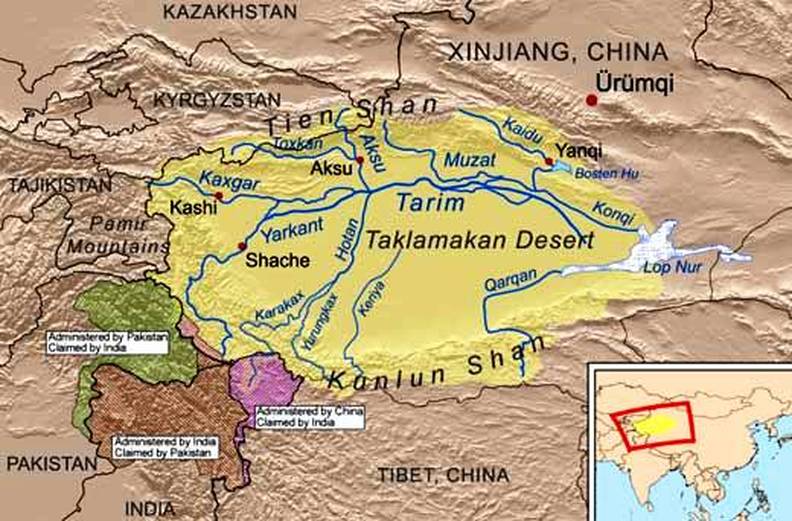
I recommend the work Indo-European Vocabulary in Old Chinese: A New Thesis on the Emergence of Chinese Language and Civilization in the Late Neolithic Age.
Here for more on ancient Western migrations to China
.
A New Look at Old Words
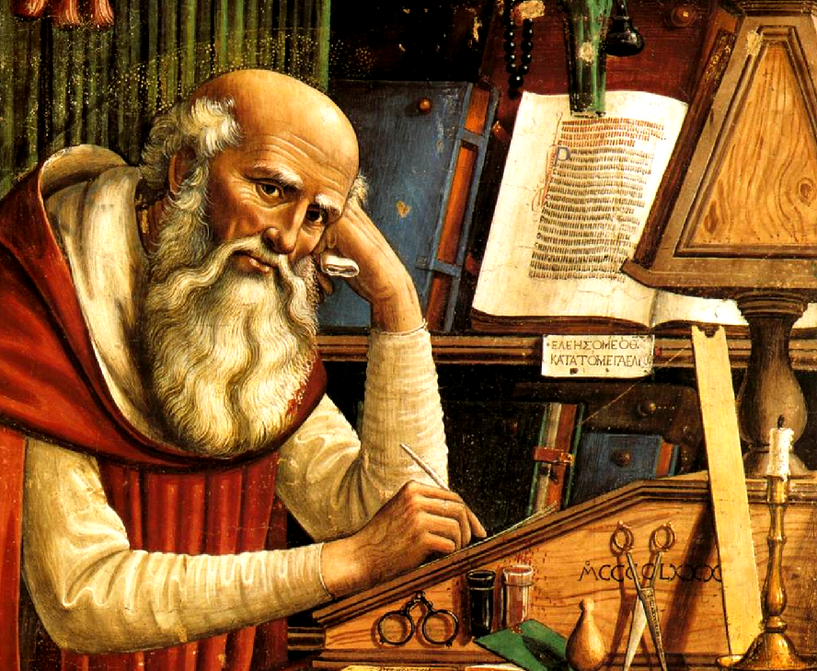
HEBREW
Nowhere does the Bible say that the Hebrew is the language of God - Helena Blavatsky
The words 'Ibri' or "Hebrew" occur some thirty times in the Bible, a small number compared with the 2,500 appearances of "Israel." The two terms are not synonymous - Joseph M. Modrzejewski (The Jews of Egypt: From Rameses II to Emperor Hadrian)
This is one of the most important words to study. It takes us to the heart of the proof for the West to East transmigration of the elements of civilization. Understanding the truth of this single enigmatic word enlightens the unbiased researcher, revealing the extent of the industry of the perfidious mythmongers.
The word Hebrew did not relate to a particular creed or race, but to the elders known as theIbaru or Ibri of Ireland and later of Egypt. The title can also be rendered Iberes, Eber, Hiber, Hibaru, Gheber, Abari, Iebre, etc, connoting the wise ones from the North-West, the ancestor race also known as the Shemsu Hor or Disciples of Horus.
Even the earliest known account of the Irish, from Roman proconsul Rufus Avienus, suggestively refers to them as the Hierni, the word hiero meaning "sacred," "holy" or "priestly." We still find the term in words such as hieroglyph and hierarchy.
From here it is a voyage of two days
To the Sacred Isle (for thus the ancients called it),
Rich in turf among the waves.
The Hierni live there,
Thickly populating the land,
And nearby lies the isle of the Albiones (England).
- Ancient Poem describing Ireland
This term, Hierni, probably used by the original Phoenician-Irish, was already corrupted by the time later eastern tribes employed it in the more familiar form of Hebrew. The superior rendering is probably Hiberu or Ibaru.
The ancient name for the land of Ireland was Hibernia, with the ancient Irish being commonly known as Hibernians. This word denotes Gaelic tribes descended from the ancient Irish, which once also inhabited Scythia and Spain. It appears in place-names such as the Hebrides (in Scotland. (Indeed, the very name Scythian connotes Skye, the famous island in Scotland.)
Because ancient Irish mariners traveled to northern Spain, and had settlements there, the latter's ancient name was Iberia, meaning "place of the Hibernians." The name Portugal means "gateway of the Cale," that is the Gals or Gaels.
…not a single inscription has been found in Palestine which can be identified with the Hebrew kingdom - H. D. Daunt (The Center of Ancient Civilization)
The Hebrew and Phoenician languages are practically identical - S. F. Dunlop (The Ghebers of Hebron)
The oldest traditions of the Hebrews were also preserved among the Phoenicians and the other peoples of the same race - ibid
...having identified so many Hebrew words that have been derived from the ancient Egyptian, I have already proposed that Hebrew is simply a later dialect of the Egyptian language - Ralph Ellis (Scota: Queen of the Scots)
St. Gregory of Nyssa remarks that the most learned men of his time knew positively that the Hebrew language was not so ancient as most other languages, and that the Hebrews never spoke it until after their departure from Egypt – A. D. Thompson (On Mankind their Origin and Destiny)
The Hebrew alphabet contains twenty-two letters, six vowels and sixteen consonants. But it has not always contained so many letters. The words of the written language being known only to the priests, they became a learned language," a 'language of doctrine and of teaching," and, as it was only read and interpreted in consecrated places or in the temples, and for the priesthood, it was also called, ''the holy language," " the sacred language," and "the holy doctrine' – ibid
The Biblical Eber or Heber (grandson of Arphaxad) gets his name from this Irish tribe or race. So it is with the place-name Hebron.
It is acknowledged that Hibernia - the term used for Ireland by Julius Caesar himself - derives from Ierne or Ierna, which the historian Strabo preferred to use. Again, the term is akin to Hierne, meaning not only "north" but "holy."
Other acceptable variants of this are Hiern, Hierna, Erna, Erin, Eire or Eriu - the name of a tutelary Irish goddess. The name Eire (pronounced ehra and still used as the official name for Ireland) derives from the appellations Ari, Arya and Aryan. The word Iran comes from the same root; the Persian Magi being identical with the Western Druids. (Here for more...)
It may also be that Hierne denotes the most holy one - namely Herne, ancient horned-god of the pre-Celts, also known as Cernunnos or Nikor. Horned animals were sacred to the pre-Celts, Celts, Goths, Nordics, Teutons, Scythians, Persians, and other megalithic peoples. This is the case for the high Arya of Northern India, worshipers of Pashupati, Lord of the Animals, identical to the Western Herne. The Hellenic version is Herme or Hermes, the Roman version being Mercury, so-called messenger of the gods. Pashupati later became Shiva, seen seated among the animals in the same pose as the Irish Herne. This single petrograph confirms the worldwide presence of the Western Arya. (Here and Here for more...)
A Latinized version of Hierne or Hibernia is Hyperborea, meaning "extreme north," denoting the superior Aryan elders of those climes, where all sacerdotal and astromantic motifs, tropes, rites and traditions originate.
The letter "H" often meant the same as the English "the" or French "la" and "le." In this case the term Hebrew is correctly rendered "the Ebaru" or "the Ibaru."
In short, the original Hebrews were elders from Ireland, Scotland and Scandinavia. They were an ancient caste of adepts who venerated the stars and zodiac and who had stellar churches and centers of learning throughout the world. In eastern lands, such as Persia, Chaldea and Egypt, they and their disciples were mystery school adepts and instructors. They served as educators and advisors to a many foreign kings and princes. They were also counselors to the pharaohs. In the Old Testament tale of the patriarch Joseph, who allegedly rose from the status of jailbird to advisor of pharaoh, we see a corrupted vestige of the reality of which we speak. Old Testament characters, such as Daniel and Joseph, were interpreters of "dreams," or more correctly of symbols. They represent the Priesthood of the Ibaru. Their stellar cult studied the ordinances of the heavens and the zodiac, to design the geomantic and geometrical template upon which the Great Pyramid was constructed. (Here for more...)
…the term ‘Hebrew' suffered several changes of meaning before coming to stand for the Israelites and their closest relatives – Herbert Wendt
In my view, the term Hebrew has been deliberately misinterpreted. This is because of the similarity between the words Ibaru and Apiru (or in Egyptian Apir). The word Apiru can be found in Sumerian, Assyrio-Babylonian and Egyptian texts. It referred to a wanderer, immigrant, or undesirable person or group. It was used to denote people living within the borders of a sovereign country but who had become a disturbance or nuisance, and who were not wanted. Apiru may have come from the root abr (or obr) which refers to passers by, travelers, or those without a homeland. Apiru is also thought to have referred to farmers or shepherds. This connotation allowed some scholars to connect the Hebrews with the "Hyksos" of Egypt - the Shasu or Shepherd Kings.
For more than a hundred years, orientalists have likened the word 'Ibri' to the terms 'Apiru,' found in Egyptian texts, and Habiru, its cuneiform equivalent. These terms, signifying "dusty" or "dust-covered," apply to western Semitic populations spread over a vast territory, extending from Egypt to Mesopotamia; they were semi-nomads roaming around the fringes of the desert, on the marches of sedentary society. Their identity is obscure; it may be approximated by an anthroponymic reference to a national divinity, 'Apir-Baal,' "the dusty one of Baal," or 'Apir-El,' "the dusty one of El." By vigorously sifting the "dust", these marginal people could occasionally be put to use and absorbed into the local population as workers or soldiers. But "civilized" society still looked upon them with fear and distrust - J. M. Modrzejewski (The Jews of Egypt: From Rameses II to Emperor Hadrian)
Hebrew means "one who is from across the river." Rivers were often the boundaries of ancient nations, and one from across the river meant, simply, an alien. In every country of the ancient world, the Hebrews were known as aliens. The word also, in popular usage, meant "one who should not be trusted until he has identified himself." Hebrew in all ancient literature was written as "Habiru". This word appears frequently in the Bible and in Egyptian literature. In the Bible, Habiru is used interchangeably with "sagaz", meaning "cutthroat". In all of Egyptian literature, wherever the word Habiru appears, it is written with the word "sagaz" written beside it. Thus the Egyptians always wrote of the Jews as "the cutthroat bandits from across the river" - Eustace Mullins (New History of the Jews)
The great Egyptian scholar, C. J. Gadd, noted in his book, The Fall of Nineveh, 1923, "Habiru is written with an ideogram...sa-gaz...signifying 'cut-throats'" - ibid
They looked on the Jews as being worth only the most menial of tasks. Leprosy was rampant among the Jewish people and the disease was considered to be displeasing to the Egyptian gods. So, the Oracle of Ammon ordered the Pharaoh to purify the land by driving the Jews out into the wilderness - Stephen Knapp (Proofs of Vedic Culture's Global Existence)
Secondary meanings of Ibaru or Ebre connote sacred rivers, symbolizing the Underground Stream of sacred knowledge, and the men who served as fonts of wisdom, wetting appetites for truth and bestowing understanding to thirsty minds and hearts. (We see fountains in the civic centers of many cities and towns which also represent the Underground Stream of occult knowledge.)
In Egyptian, the word Eebre or Ebre (or Hebrew Hiber) referred to rivers and water. The reference was most probably to the Nile itself, and to the men of the river. It probably related to the great mystery schools that once sat on the banks of the sacred river Nile. That this name turns up in the North-West - and that it is the root of the ancient names of Spain and Ireland - is not to be explained away as coincidence. It is also not to be explained conventionally, as evidence for the East to West migration of peoples. On the contrary, the only acceptable and accurate answer to the etymological evidence is that it proves the earlierWest to East migration of peoples and cultural elements. The Ebers, Hibers, Ghebers or Hebrews were the Ibaru - the Arya or Aryan priesthood from the lost Arctic Homeland of the North-West.
With the "H" added to the beginning of the word, we have "the Eber," that is, "the men of the river." Rivers were considered sacred to the ancients, symbolizing esoteric knowledge. The Rhine river, for instance, takes its name from the Germanic word Rune, meaning "sacred knowledge," or "source of wisdom." Men of the River, therefore, referred to those of the "Underground Stream" of hermetic knowledge.
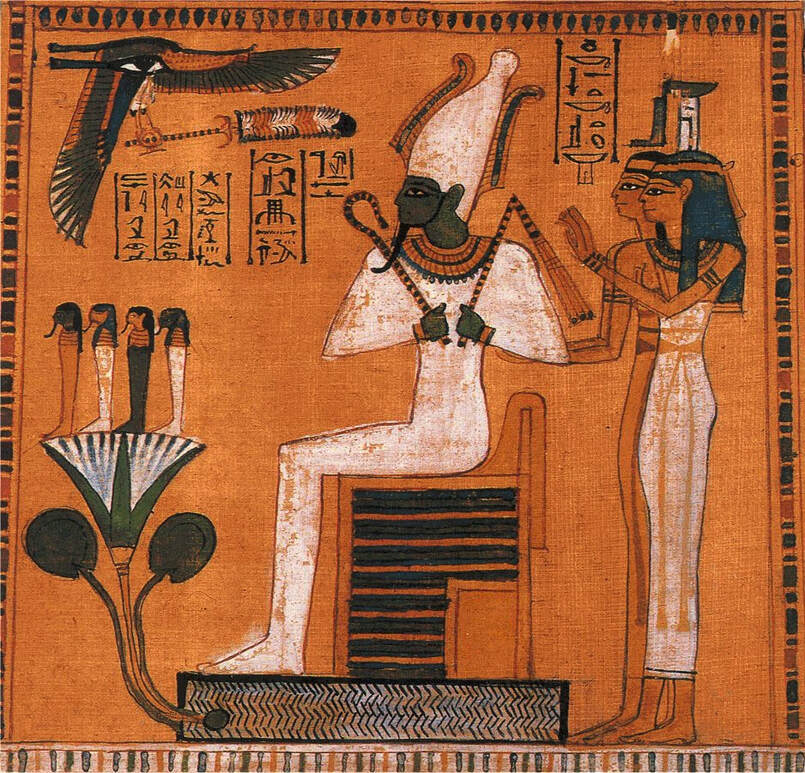
Osiris enthroned, from the Papyrus of Hunefer. Note the throne's pedestal and wavy lines representing the sacred stream of Gnosis and wisdom of the Ibaru. Note also his green complexion, representing nature and fertility. Osiris was the original Green Man. Many Osirian symbols connote the Western hemisphere. (Here for more...)
In the Papyrus of Hunefer (in the Egyptian Book of the Dead) we see Osiris enthroned upon the sacred river, or pool of water, from which arises the papyrus plant with the four sons of Horus. Indeed, in the earliest creation stories, Egypt itself arose out of the Primordial Waters, always symbolized by a goddess. In proximity to the sacred stream of gnosis, he is defined as an Ibaru or Hebrew.
We can go so far as to speculate that the Ibaru were themselves pharaohs in Egypt, or at least advisors to the nobility. This was the position held by Sigmund Freud, L. A. Waddell, Anna Wilkes, H. P. Blavatsky, Samuel Dunlop, Herbert Wendt, Comyns Beaumont, Conor MacDari, and other eminent scholars. (Here for more...)
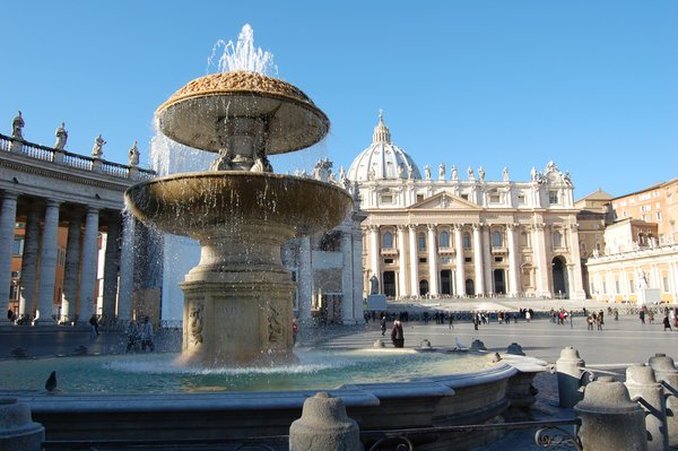
Fountains represent the Underground Stream of sacred knowledge and
the sages who quench man's thirst for knowledge and understanding.
City squares, domes and other motifs represents Hyperborea or the
Arctic Homeland from which the highest gnosis once flowed. The
word fountain connotes the family of Fontaine, of which Bernard
de Clairvaux was a member. He was the patron of the Knights
Templar, whose agents control the Vatican today. Civic fountains
are symbols of the Templar presence and order. (Here for more...)
The so-called "Hebrew" alphabet is, therefore, the Ibaru alphabet of the Hyperborean elders. It is not originally Jewish, in the sense commonly understood. The sacred letters and vowels of the Hebrew alphabet were invented to preserve the lost gnosis of the fallen Arctic Homeland. No understanding of Kabala, Runes, Numerology, Gematria, Tarot, Astr0-Theology, or the Divination Arts is complete without recognition of this fact.
From this we see that the original Hebrew were from North-Western climes. They carried the gnosis of the lost Arctic Homeland to the four corners of the globe.
As I show throughout my revisionist work, the ancient motifs, tropes and customs of the ancient Irish Druids and later Egyptian Amenists (the Hyperborean Arya) were flagrantly appropriated by their destroyers.
The Hebrews encountered in Palestine various long-established races with whom they had strenuous battles. There were the original inhabitants, the Refaites and the Anakites, ‘the children of Enoch,' creators of megalithic cultures whom we are introduced to in the Bible as giants and cave-dwellers - Herbert Wendt (It Began in Babel)
There was a Jerusalem, inhabited by Canaanites, long before the Israelites arrived - ibid
In the First Book of Samuel we encounter a representative of this sea folk - the giant Philistine Goliath of Gath: ‘And there went out a champion out of the camp of the Philistines, named Goliath of Gath ("Goth") whose height was six cubits and a span - ibid
...learned critics have shown that the Bible names of angels, such as Gabriel, Uriel, Raphael, Michael, Satan, etc., are purely Chaldean or Persian! And this is confirmed by the Talmud of Jerusalem, which says expressly that the Jews borrowed the names of the angels from the Babylonians. Even the name Israel is not a Hebrew but a Chaldee word, as was fully explained by Philo Judaeus, when on his embassy to the Emperor Caligula - Logan Mitchell (Religion In The Heavens Or Mythology Unveiled, 1881)
In The Bible Fraud, Tony Bushby reveals the origin of the letters of the Hebrew alphabet. According to Bushby, the shape of each letter derives from the serpentine shapes cast by the sun when passing through a crystalline capstone that once sat on top of the great pyramid at Giza. Indeed, the Sumerians referred to the great pyramid as the "House of the Serpent."
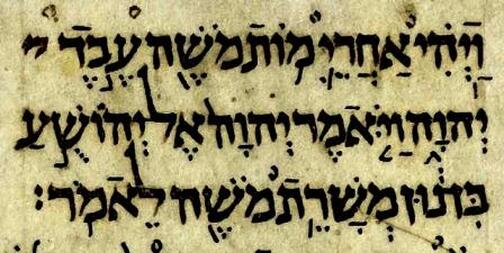
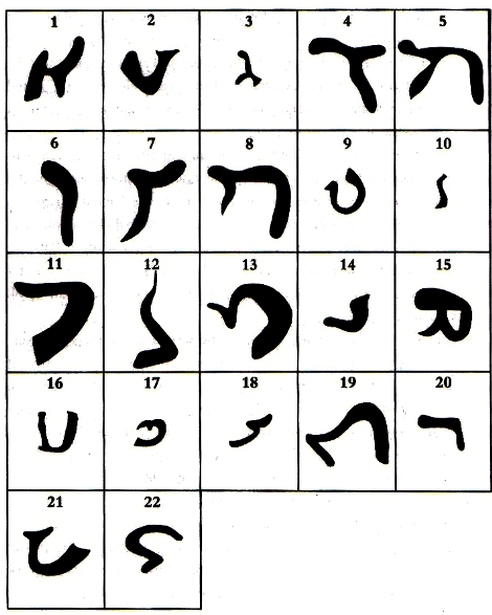
The serpentine shapes formed by sunlight passing through a crystal pyramidion. The official line on the origins of Hebrew is finally busted.
...and he drew nigh to a large structure which was built of crystal…and containing tongues of flame…and the aslant walls of the structure were covered with a tessellated flow of crystal…and its base was of crystal – (Book of Enoch)
We see from a study of this one word how language has been used to successfully deceive and conceal identity. It is still expertly misused to obscure the truth and manipulate humanity.
PHARAOH
Comes from Pharong, meaning the Liberated One. Also from para or bara, meaning brother. It is also connected to the term pharos (fire) meaning light and effulgence. It also derives from the Greek pharos-nous, or lighted mind. Pharoneus or Pharomeus gives Prometheus, the light-bringer of the later Greeks. The word Farragh was used in Scotland and Ireland, meaning Chieftain.
MOSES
From mosis, meaning the "royal son." Moses was actually Amenhotep IV or Akhenaton. It also derives from Meshe, meaning "Anointed One" or "One who Anoints," indicating an initiator. This term can be found in names such as Ahmosis and Tuthmosis.
ADON (ADONAI)
Means, "Possessor," "Owner," "Husband," or "Lord of the Woman," "Master." Adon is identical to the Egyptian deity Aton.
AKHENATON
Pharaohs typically had five "throne names." Akhenaotn was originally known as Amenhotep IV, and also as Amenophis. His name is ocassionally rendered Ikhnaton and Akhenaten. Although there are several interpretations of the name, it means "useful to the Aton," "favored by the Aton," or even "beloved of the Aton." Images show the solar arms and hands reaching out toward the pharaoh.
The word may also connote the eye. In Punjabi the word Akha means "eye." The eye has long been associated with the sun, as csn be seen on the removed capstone of the pyramid on the one dollar note.
One of his throne names was Meriaten, sometimes rendered Meryaten. One of his daughters was known sa Meritaten. She was also known as Mayati. She was a Great Royal Wife.
CATASTROPHE
The word means the destruction of a star. Specifically, the word connotes the destruction brought on by comets. The majority of cultral and religious symbols derive from the observation of comets in ancient times, by ancestors with limited understanding of the nature of the solar system. The utter destructiveness of the passing comets caused panic and terror the world over. After centuries of tumult in the heavens, the ancients were fearful of celestial phenomena. All sorts of rites and rituals were performeed to appease the wrath of the "gods," that they might not smite the earth with thunderbolts and torrents of fire and brimstone. Several cultures devised entire religious customs based, not in sun or moon worship (as misguided scholars often believe), but on the imagery and behavior of comets. The imagery of the witch on her broomstick, of the fiery dragon, and of St. George and his dragon, etc, all allude to the presence of careening comets. Biblical imagery is to a large degree based on cometary action. Accounts of King Saul and his lance, King David and his sling, of Mother Mary and Gabriel, of the beast of John's Revelation, etc, as well as numerous verses and passages from the Old Testament books of Zechariah, Isaiah, Ezekiel and Job, etc, also pertain to cometary intrusion.
DISASTER
This word also refer to the destruction of a star. Literally - no star. It can also be translated as "evil star," referring to the intrusion of comets. The trail of a comet can extend over a million miles, and those which entered our solar system, approaching earth, disrupted the earth's orbital path causing havoc which was etched into the racial memory of whole nations. Legends the world over speak of the ages of catastrophe and the devastation wrought by comets and by planets upset by them. The red spot on Jupiter, for example, was caused by the ejection of a comet which eventually became the planet Venus. Before setting into as stable orbit, the comet twice crossed the orbit of the earth. This near collision caused the craters on the moon, and wrought indescribable mayhem on the earth. It may have gouged the immense crevasse known now as the Pacific Ocean's basin, and certainly caused terrifying firestorms, tsunamis, and the mass extinction of men and beasts the world over. It may even have caused the pole to tilt. The planet Mars was massively destabilized by a comet, which apparently also caused the axis of Uranus to tilt 90 degrees. A comet may have caused Saturn's rings to form, and the moon to veer away from earth to its present position. The Asteroid Belt may also be the result of cometary intrusion. (See also the word Sinister, in context of a malefic planet, star or comet).
LUNA
This name of the moon, really means "lone" or "alone." Another common name of the moon wasMin (see minute) or Mon (see money). See also words such as "monsters" and "lunatic," connoting persons as damaged as the moon.
SOL
This term for the sun really means single and alone. Perhaps, as certain legelds report, there were two suns in our sky, or perhaps one actual sun and one resplendent planet far closer to earth than at present, which was taken for a second sun. From it we get sole and soliloquy, solitude, solitaire, solo, solace, etc.
STAR
A very important term in the ancient world. The word star has been used as a title to distinguish high level adepts and initiates of "Judaic" cults and sects. The Queen of Sheba, for instance, meant "Queen of the Star." The so-called "Star of David" is really the star of the Hyksos Dynasty in Egypt, that history knows as the Israelites. The word david is the correct translation of the syllable tut, which was itself a pharaonic title. The name "Tuthmosis" was adopted by at least five solar cult pharaohs, and the name of the famous Tutankhamen also bears this syllable or title.
The word star in Egyptian was "saba." This is where the term "sabean" comes from, meaning "of the heavens" or "stars." This term "saba" can also be rendered in several other ways, for example seb, seba, sheba, sava, seba, seva, zeba, and so on. The English word "star," and Latin word "aster" both derives from the Egyptian original. The names of certain deities such as Sobek, Sebekh, Set, and Shiva, probably derive from this syllable that referred to the stars and to the master astrologers. The head of the Essenes at Qumran near the Dead Sea, bore the title "Star," and Jesus, allegedly in his own words, identifies himself with the "bright and morning star." The word saba or seba is the root of the modern word "seven." The number seven indentified members of the Stellar Cult. We note that there are seven candlesticks on a Jewish menorah.
In short, the title and appellation "Star" denoted a messiah or Christ figure, a great spiritual or political leader. Today, we find the image of the star emblazoned on the regalia of the popes and archbishops and on innumerable churches, cathedrals, and temples throughout the Western world. An examination of the following words reveals the syllable denoting the star.
Ashtaroth
Astarte
Ishtar
Tarot
Taurus
Zoroaster
PASTOR
Here is a word commonly used by persons in the Christian religion, in reference to someone with clerical duties. The word has two syllables, Pa and Stor. The first syllable is the root of the word for father, elder and great. The latter stands for Star. This is where we derive the word aster, and asteroid, meaning "star." The vowels often replace one another as a word passes down and is pronounced by different cultures. The word pastor, translates as great orfather star. The great star is, of course, the sun, the great star in the heavens. It may also relate to Saturn, which was the supreme "star" of the ancient Cult of Saturn. Now in the time of the Saturnian Cult the color black was worn by the holy ones, because as astrologers know, the planet Saturn and the domicile Capricorn, are connected with the color black and the metal lead. Followers of the ancient Cult of Saturn or of EL, knew that it had rings around it. The white ring around the collar of the Pastor, and the black robe that he dons, are direct references to the Cult of EL or Saturn. EL worshipers had their days and calendars begin at 12 midnight and held their convocations on the day of Saturn (Saturday), as opposed to the later Solar Cult that worshiped on the Sun's day (Sunday). Now the planet Saturn was worshiped because it was the planet that had the rings around it. This is where we get the image of the magician standing in a protecting circle, usually containing planetary sigils. It is why the magistrate, in a court, sits in a half circle. It is why when one comes to be married a weddingring is worn. It is why the monks shaved their heads in a ring, why the Jews who worship on the day of Saturn, wear the yarmulke and why the Pope also wears it. It is why the yogi joins his thumb and middle digit together, to signify mastery over the forces of karma and time. It is why ambassadors upon entrance to a foreign court, would draw around themselves an imaginary circle to indicate neutrality. It is why Kings wear crowns. This very word, as well as coronet, comes from corona and Cronos. Cronos was the Greek version of Saturn. In fact, the Kings would often wear the ring of authority or power due to this relation to the planet Saturn. It is the reason why women wear the earrings, as they were told to listen to their god Saturn. It is where the idea for the spiritualizing halo came from, that one sees throughout religious art. The ancient name of Saturn was, as mentioned, EL. It is the reason why those that were chosen by EL, were called Elites. In fact the words, Elect, Elder, Elevated, Elohim, Temple, Circle, Gospel, Apostle, Disciple, Evangelists, etc, all derive from the Cult of EL. Angels are messengers of god. But god was EL, which is why we have the names of the Archangels bearing the "el," suffix - Raphael, Michael, Uriel, Gabriel, etc. It is where the idea came from to ring a bell in order to summon people to worship. Many place=names contain the prefix or suffix EL (see Elstree, meaning EL's Tree). Understanding of modern religion can never be complete without a comprehension of this great cult as its symbols permeate all areas of religious and even secular life. A look at corporate logos symbols makes it clear that this cult is not at all extinct. El also gives Bel, Bael, Baal and Belial. (The word bol or bal, means "bonfire" in Norse, again connoting fire and the gods of fire. In the Levant, we have El and Ba'al, the gods of volcanoes and fire.)
MASTER
This word probably has its roots in Persia, where it was originally a title used by the Magi, as in Magister and Magi. In Persian, mas meant moon, so apparently a \master was associated with the heavenly bodies. Islam still uses the crescent as an emblem, indicating that they too were a branch of the Stellar Cult. Of course, we still recognize the terms aster, astra and astralas pertaining to stars.
It was thereafter given to those of intelligence and merit. Since the Magi were members of the Stellar Cult, we are inclined to associate with the heavens, stars, luminaries and zodiac.
The syllables are Ma for measure and Ster for Star. "measurer of the stars,"- namely an astrologer. Children are still given a star today for successful application to their studies. When we matriculate from a university, we are given a "Master's Degree." This is purely sabean. Degrees are part of the cycle of the zodiac. The ancients marked competence on how a person knew about celestial mathematics and the science of the heavens. The heavens are the abode of the goddess, so knowing the movements within her abode was paramount to the ancients. The operations of the heavenly bodies and familiarity with their "great dance," was the vaunted knowledge. One was given a "degree," to show that they, like the sun they were progeny of, had ascended to an exalted place. Once you had mastered the stars you were then quite literally a MASTER.
MINISTER
Another familiar term associated with the ecclesiastical profession. However, what few realize is that this word originated in or refers to the Lunar and Stellar Cults. The word min was the common name of the moon. It is where we derive the words minute and moon. And ster, is really star. So when we refer to someone as a Minister, we are really saying Moon-Star. It is a title that derives from the lunar and stellar cults. This explains why there is a minute hand on a watch. The three hands of a watch relate to the three planets associated with time. The slow hand is the hour hand, meaning Horus, the sun. The minute hand is for Min, the moon and the swift ticking hand is for Mercury, the planet which rotates fastest of all, both round the sun and on its own orbit. This is why the figure of the god Mercury was depicted with wings on his shoes or feet.
SEMITE
This word, together with Ham, Hamite and Chem, simply alludes to Egypt, known originally as Khem - the Black Land; black referring to the "Black Arts" and many mystery schools of the Nile where secret doctrines were taught by the adepts, doctrines such as Kabala, Alchemy, mathematics, geometry, astronomy and medicine, etc. Indeed, the words Alchemy and Chemistry contain the original name of Egypt, Khem. Therfeore, despite the deliberate obfuscation, the Semites (the descendents of Shem) were really the learned men or adepts of Egypt.
HOLY
Derives from the same root as halo, hallowed, hail and hello, etc. All come from Helios, the sun. Halos were depicted as effulgent aureoles around the head of a saint or prophet. The halo also represents the rings of the planet Saturn. In Nordic climes the term is rendered Hel, similar to the original name of the Greeks, the Hellenes. Terms such as hole, whole, holisticand hollow, are derivations. For the Norse this is a most important term, not only connoting the goddess of the underworld, but the whole concept of a purgatorial underworld sojourn. It connotes the land of the dead, and the various trials undergone by a dead hero while interned there. When the Artctic Homeland fell, and after the Church decimated the ancestral civilization of the North-West, the term was demonized and recast as the "hell" known to Christians.
CHURCH
This finds one origin in the Greek Circe, the goddess of deception who lured men into her lair and transformed them into pigs. In Scot's Gaelic the word for church is Kirk, a derivation of Circe. We get the words circus and circle from this goddess name also. Many "holy" cities, shrines and precincts were of circular design. The original reason for this was not defence. That was only later. Originally, the enclosure represented the goddess protector of the city, a word that also connotes the female and her generative system (from cteis, meaning vagina or womb.)
CARDINAL
In Catholicism we have the Pope and his Cardinals. The word is Latin for "hinge." As the sun passed the great solstice and equinox points, it was said to have passed and even to have "opened" the doors of the Houses (astrological). The physical Pope even has rituals called the opening of the door to the year or the millennium. Pope seems to come from Pontifex meaning "Bridge Builder" or from Papa, meaning the "doorway." The cardinal points are a direct reference to the astrological colures. The Cardinals surround the Pope as the cardinal points surround the sun. The sun casts its rays on the Houses as it passes, turning them crimson. The color worn by the physical Cardinals is red, to symbolize that they are illuminated by their proximity to the Pope, the representative of God on earth. The word Pope, may also be a derivative of the word in Egyptian for the evil serpent Apep, Apophis or Apopsa.
In Norwegian the word for "door" is dor or dur, which is similar to the Albanian word dru, the German tor, Gothic triu, and Anglo Saxon trio.
In Gaelic we have doire, meaning "oak," and connoting the Oak Men, that is the Druids. The city of Derry dervies from this term, and was indeed an ancient seat of lofty Aryan kings. It may be related to terrms found in Egypt and the east, such as Daraa, Dera and Dehradun. (Here for more...)
ARK
Probably derives from arche meaning "first" "earliest," or "highest." In Hebrew the word for human breath and also of spirit us Ruach (Rkh), when the letter A is placed in front of therkh, we get arkh. Esoterically speaking, the original Ark of Noah is the spirit or womb of all life. This is also the reason why we read of the dove being sent out from the Ark. Boats and ships have frequently served as symbols for the womb, which explains why mariners refer to their ships as "she," and why female heads were mounted on prows. The christening of a newly built ship with champagne or wine simulates the act of insemination.
PATRIARCH
Means the "original father" or "highest father," or simply "high one." The term arche also connotes physical arches, which in turn refer to the astrological transit of the sun across the northern sky. Hence the term has astrotheological connotations. In this sense, a Patriarch is a "heavenly" or "stellar" father.
ARCHBISHOP
Again this refers to the great journey of the sun across the northern sky. The term bishop is one of the oldest words we have referring to ancient sages who "knew the sky." The term is akin to vishnu - the name for the Aryan god of the sea. Vishnu is a prototype for the Biblical Jesus. He was associated with fish symbolism which, when deciphered correctly, denotes the astrological sign of Pisces. Suggestively, Catholic bishops and popes wear headdresses which clearly connote Pisces and the ancient fish gods associated with the so-called "Age of Pisces" or "Age of the Fish." The ancient Sumerian-Babylonian god Oannes appears in the guise of a fish, wearing a headdress later adopted by Catholic popes. The name Oannes can be correctly rendered Johannes or John. No surprise that one of Christ's disciples was known as John and that he was one of those sent by the Lord to be a "fisher of men."
MAGISTRATE
From Hebrew aser or atsar, (close to aster and astra), meaning "judges," "magistrates," and "stars." The Magi were the Egyptian star-gazers or astrologers. The black-robed judge or magistrate, like the priest, pastor, rabbi, missionary and scholar, is styled on the planet Saturn, always denotative of law and order, establishment and Karma. "Old Father Time," that punishes for infractions of divine law. He sits three stories high and presides over the twelve lesser "judges." But there is a more secret rationale behind the design of courts and the use of the number thirteen. The court rooms of today are analogous to the zodiac. The judge represents the 10th House or sign, Capricorn, he that puts a "stop" on you, calls you to account. In the Tarot the equivalent card is called The Devil. Also the number thirteen is extremely important in occult ritual, though not for the reasons known to superstitious Christians and the like. It represents the Lunar year and also the 13th sign of the zodiac that is known and employed by the black deceivers. This sign called Ophiuchus, (the Serpent Bearer), runs between Sagittarius and Capricorn. It is considered by occultists to be something of a neutral zone, and not part of the regular zodiac. The reason for this has to do with the Galactic Center, the Black Sun, which can be considered the altar of the solar system, and point to which everything moves. This central sun is located in the thirteenth sign. It is considered a precinct of the zodiac removed from the other houses. This is why when one is in a Law Court, one passes through a small gate and fence to face the judge. He is the thirteenthminister representing the thirteenth astrological sign. This is why in many cathedrals, churches and synagogues, there is a precinct behind the altar, leading to the holy place. It is the reason why many civic centers and government buildings bear motifs and murals depicting zodiacs and large black stars. Motifs of this type can also be seen on the architecture of Masonic Halls. They can also be seen on many corporations and product logos. The planet Saturn is often used as a stand-in for the black sun. This may be due to the fact that Saturn rules the sign of Capricorn which is associated with the color black. Along with the symbol of the sun, the symbols of Saturn are among the most common to be found on corporate logos. The swastika is also referred to as the "Black Sun." Many corporate logos feature a swastika design. Many serial killers murder thirteen victims before they getting caught. This indicates their ritualisticnature. Many government activities, both covert and non-covert, are likewise convened under the thirteenth sign. This includes state rituals, public addresses, speeches, marriages, media debacles, declarations of war, and assassinations, etc.
SISTER
Comes from the word for star and possibly the phoneme Xi (now si), meaning woman in ancient Greek. The word sissy, used as a ridicule for cowardice, comes from this.
CARPENTER
Refers to architects and masons, those initiates of sacred esoteric sects and guilds. From the Egyptian setepenre, it was a title used by the Egyptian pharaohs. In Greek poimen, meant the "king's counselors." This gives a new light to the story of the Nativity which tells of "Shepherds" visiting the newly born Jesus Christ. (See Gospel of Luke). Akhenaton referred to himself as the "Architect," and this term is frequently used by Freemasons.
MONTH
This one is still well known. It refers to a full lunar period or cycle. After the joining of the great Cults, each was permitted to have a season of the year for their own, to commemorate their own deities and beliefs. The calibration of the year followed the movement of the sun, to keep the elites of the Solar Cult happy. The division of the next section of annual time was given to the Lunar Cult, that is, the 28 day month and the week of 7 days incorporates the sacred numbers and planets of the Stellar Cult.
MONK
Apparemtly from the root mon from mono meaning "solo" or "solitary."
CEREMONY
Common word that in religions indicates the time of ritual. But the name is made of two goddess names. Ceres is the Greek goddess of the earth, connected with harvests and Mon is moon, the Lunar-Feminine influence. In astrology the planets Venus and Moon are compatible.
DEACON
This may seem unfamiliar until one remembers that the word is the same as decan, the section of 10 degrees that each of the 12 houses of the zodiac are divided into. So, a Deacon or Arch-Deacon gets his name because his original duties in the time of the Stellar Cult was to watch the stars, their stations and motions. Such a personage was titled in accordance with his function. A Deacon was nothing more than an astrologer who watched the stars by night.
SEXTON
This may seem unconnected to the stars and heavens until we realize that it is the same as the word sextant, which is a instrument the navigators and astronomers use for measuring - guess what, the stars. A sexton is a man with clerical duties. So how is it that he is named after an astrologer's instrument? The reason is that before we had the modern religions, the gods were the Luminaries or at least were represented by the Luminaries and the stars. The religion of the stars is the earliest religion, and all the subsequent religions and their doctrines are founded on it.
NUN
This word has also hardly changed in centuries. The earliest goddess of the Stellar period, of the primordial abyss and night sky. She was the great virgin, and was associated with the fish. The word nun means fish in Hebrew. The fish was a symbol for the geometric Vesica Piscis, which was the symbol for creation. And so, today, we have the "Nuns of Christ" who are also known as the chaste "Brides of Christ." We also derive our word noon from Nun. Noon was not midday but twelve midnight, when the goddess was seen above in the night sky. The heavenly dome was her great womb and the planets and stars were seen as the inseminating spermatozoon or seeds within that womb. The sun was seen this way. It was the "seed" of God entering her womb or ovum every morning, resulting in life and fruition and abundance. It is for the same reason why it became customary to ignite fireworks on special calendar days, to represent the seeds of light being planted within the celestial womb. This rite was to ensure a "bright" future. It was also to remind humanity of the disasters which befell the earth from cometary action.
ORISONS
In pre-Industrial and Medieval times one did not say "I am going to say my prayers," but my "orisons." This word is the same as Horizon, as all Solar Cult practitioners would say their prayers to AMEN or ATON, by turning to the east, where the Sun rose. Horizon, is literally the zone of Horus, or Horus's Zone. Again we find a Christian word for prayers that has its roots directly in the pagan past. The purveyors of the Christian ethos, who take 7 year theology degrees, are all aware of these connections. They know the origins of their edifices all too well. The horizon is the zone of Horus, whereas on the Western side we have the sunset. This term comes from the fact that the Egyptian lord of darkness, the enemy of the sun-god was called Set. So when the sun is consumed by the darkness, we call it the time of sun-set. The three stations of the sun in the sky gave rise to the original Trinity that the Christians later used for their own purposes. The word zone, is actually a derivative of the word Sun anyway. Zone becomes zon, which becomes son, or sun. We commemorate the movement of the sun in the very act of writing. We write from left to right, to emulate the movement of the sun from east to west. For without the light of the sun, there could be no writing and no knowledge. Light is the most common connotation for knowledge, e.g., enlightenment, illumined, alumni, illustrious, brilliant, scintillating, elites, pupils, etc.
EASTER
From the name of the Norse goddess Ostara. A long celebrated ritual period, that the Christians particularly recognize as the time of the resurrection of the son of god. It may also connote the eastern star, or the sun at the Spring Equinox, being "born again." This is why the Jewish feast of the Passover is called Passover. It is because the sun has literally passed overthe equinox at Aries, from the winter seasons into the new year. In fact the feast comes from the Age of Aries, which is why lamb's blood was smeared on the "doors," meaning houses of the zodiac. Easter also contains the word aster, again meaning star.
ATONEMENT
In the Christian religion we are told to seek atonement with God and for our sins. However, what we are not told is that the word means Aton-ment, suggesting oneness with Aton, the Phoenician Adonai. Aton also gives us words like Eaton.
MATRIMONY
In the Christian world we have the ritual of the coming together of the male and female, under God. The term for this is, however, made from two names - Ma'at (the goddess of order and justice, presiding over the unification of opposites whose image can still be seen above court-houses) and Mon or Min, for the moon god. Marriage is the coming together of the feminine and the masculine.
MINUTE
Arises from two goddess names, Min (moon) and Nut (Nuith) both of the Stellar Cult. The former was the keeper of time as it is today. In fact the reason why a watch has three hands is to represent the three important planets associated with Astrological and sidereal temporality. The slow moving hour hand is for the sun (Horus), the quicker moving "Min-Nut," hand is the moon's hand and the fast ticking hand is for Mercury, the planet that was known to spin fastest around the sun and on its own orbit. The chess-board also preserves this. The King which can only move one square at a time is the sun, the Queen which has more latitude is the vacillating moon and the black and white squares of which the board is comprised represents the day and night of the diurnal motion of the luminaries. This and other games were created by the Stellar Cult, who also worked with the right-brain modalities of expression and comprehension. In sports today, there are three levels of competence and the symbols (medals) given to the victors have astrological significance. The gold is for the sun and is the ultimate prize. The silver medal is obviously for the next luminary, the moon and the bronze symbolizes the Earth itself, as the color of earth is bronze, (or could be Mars, the "ruddy one"). Kings are often wearers of medallions as these also denote the sun. Generals and army personnel also wear various solar emblems.
YOUNGSTER
Obviously means young star. When a parent saw their child they called him or her, their young star or son/sun. This is because the child god of Egypt and the beloved of the primal parents of Osiris and Isis was Horus, who was literally the young sun rising in the spring sky. Parents will often say of their good children, they are as "good as gold." This came from the phrase, good as the Golden One, or Horus.
PUPIL
A word meaning the center of the eye. But it connotes the sun which was always considered the pupil or eye of Horus, the sun god. The sun is the eye of day. We speak of students as "pupils," to represent the fact that wisdom and education makes one finally illumined as the sun. The word alumni connotes the same.
ZOROASTER
Name of the august Persian mystic of the Cult of Mithras, later adopted as a patron saint by occultists. This fictitious figure is, like Christ and Moses, etc, a composite character, a personification of the sun. He was one of the first solar mystics, worshipped at the dawn of the male patriarchal cults. This is why he is still revered in the cabals of the Masonic and Rosicrucian fraternities. The Cult of Mithras would probably have been the world's most accepted religion but for the advent of Christianity, as propounded by Emperor Constantine around 400 AD.
LEBANON
From labanah, meaning "lunar" or "moon."
GAELIC
Comes from Gal, which is a root found in many words and place names, such as Galway, Galilee, Galatia, Donegal, etc. The root denotes "white" or "pure." It has the secondary meaning of "foreigner," connoting a stranger from far away. It may originate with the SumerianAb-Gal, meaning "masters of wisdom."
CAIN
Comes from the word Cahen (or Caan), known even in the Mexicos, as meaning Serpent or Priest. Today we have Cohen. This is the Hebrew line of temple Priests. It also gives Canaan, called by the Patriarchs a land of Serpent worship. The worshippers of the Serpents were the Stellar or Sidereal Cult, which preceded the Solar, Lunar and Saturnian Cults. The Stellar Cult were renowned as the keepers of the great wisdom, as masters of the zodiac. This is the reason why we even hear Christ reminding his disciples to be as "...wise as serpents." However, it became imperative that the later Church Fathers utterly remove from history or theology any mention of their existence. The Indian or Persian term Khan, comes from this Can also. The place in France called Cannes, is named so because of it being a place of the Stellar Cult. It is not by chance that the film festivals are held there. Almost all the film production companies use sabean symbolism and the personages behind them, regard themselves as the new priests of the Gnosis. (See; Industrial Light and Magic, Dreamworks, Touchstone, Paramount, Columbia, Universal, Orion, Lion's Gate, Viacom, Hollywood Pictures, Tristar, MGM, RKO, CBS, Arista, Gramercy, Castle Rock, Trilogy, CTS, Cannon, Starz, FOX, Meridian, etc).
SATAN (and Lucifer)
This is a word that simply meant "one who opposes." It referred to any contradicting, skeptical or accusatory agent and their argument. Within holy orders, such as the Essenes, a "Satan" was a detractor or opposition party. There was nothing supernatural about a satan. To oppose any hegemony, is therefore to be "satanic." So we see that there is a big difference between Satan and Lucifer. Lucifer was originally based on the pagan god Mars. Later Satan became identified with Mars, the red fiery planet. In the Bible we have Jesus turning to Peter and saying "get thee behind me Satan." If we take Jesus to be the sun, then we can take this statement to be of astro-theological significance. Mars occasionally rises heliacally, that is with or even before the sun. The priests of the sun, in the Solar-Cult, would exclaim from their temples "get thee down" or "get thee below" or "get thee behind, Satan," in order to not have their deity be ousted, rivaled and outshined.
PHALLIC
The treasures of Ireland, Nuada's Sword, Lugh's Lance, Dagda's Cauldron and the Stone of Fal, happen to be striking analogues to the Tarot's Wand, Sword, Cup and Disk. Since the word fal means stone, the Stone of Fal literally means Stone of Stones. It was probably a powerful crystal which radiated energy. It was stolen by the Stuarts of Scotland and from there taken by the English and is said to be under the Coronation Seat in London. One story tells that the original stone was that upon which Jacob had his dream of the ladder reaching to heaven. According to the legend, this stone was then brought to Ireland by the prophet Jeremiah.
DRUID
In Old Norse, the world for judge is domar, similar to donar, an ancient name for Thor. The root dru signified kings or high priests, and is the basis for terms such as druhtinaz, dróttinn,the German Drost and Trecht, meaning "Lord God," the Old English dréogan, meaning "warlord," Swedish drott, meaning "queen," and Slavic drug, meaning "companion." (Here for more.)
NETER
The Egyptian term neter gives us nature. It also gives us nether (as in netherworld), as well asneuter and enter. Both meant, the land of the gods. The term refers to the gods or spirits, as well as to the soul.
MATTER
From mahat (Sanskrit). The word means great flux. It is akin to the Egyptian Ma'at, which gives us words such as mother, maths, measure, meter, mate, master, etc. Ma'at was the goddess of balance and harmony. Her name signified "straightness" and also "rightness," as well as "fairness." In other words, Ma'at was a goddess of virtue and rectitude. In this sense, a "master" was a man "in balance." He was straight and good. He walked the line. He lived in harmony with nature, because nature (neter) was his instructor. He studied the ways of nature and gave the names measurement, mathematics and matter to the elements and object of his studies. The word geometry literally means "measurement of the body of the goddess." The term geo comes from gaia, signifying the goddess. Indeed, it was because men observed the precise regularity of the female reproductive and menstruation cycles - and how the latter matched the moon's transit, that order was observed in the universe. Hence there is a direct connection between the body of the female and the origin of science. This fact, lost on moderns, was observed and revered by the ancients. They personified the mathematical and geometric order of the universe as a goddess. They also named their scientific techniques after her.
The "G" is an ideogram for the throne of the goddess Isis or Ma'at. The name of the Greek goddess of the earth is Demeter. This word means "mater" or "mother."
Ma'at turns up in the New Testament in disguised form. Indeed, the mythmongers transmogrified her into a male. She appears in the guise of the disciple Matthew. Before joining the twelve, he is rejected by the others. This is because he was a "tax collector." However, this simply refers to the sign of Libra, the last sign to be added to the zodiac of twelve signs. The symbol for the sign of Libra is the scales of the tax collectors. However the symbol of the scales long predates the Jews of Biblical times. The scales the well-known emblem of Ma'at, goddess of balance.
The word mouth derives from Ma'at, because it is by way of our mouth that we speak the words of truth or rightness, that is, of Ma'at.
KABALA
Probably connotes the goddess Cybele, one of the supreme goddesses of the Persian Magi and Mithraists.
APOCALYPSE
This word has a few interesting meanings. It connotes a leather covering that conceals or protects something. Esoterically, this refers to the human skin or human body that conceals the soul. In Greek the word apoko, means "peel away" or "remove," as in apoko olemo, or "I peel a fruit."<
EMMANUEL
This is an Anglicized version of the ancient OM ON EL, the names of the Sun, and of Saturn. Also derives from Ammon-El. Ammon was the sun god. Am, was the Indo-Germanic sun-god. (See Albert Pike's The Book Of The Words And Their Hidden Masonic Meanings)
ISRAEL
See Appendix I, for the probable origin of this word.
JUDAH
The word can also be rendered Yahud. The root Hud, means "Splendid Ones" "Outshining of God" or "Progeny of God," etc. The words Yahud, Judite, and Jew, have the same root as the word Judge, i.e., yew tree. The letters, J, I, and Y, were interchangeable and represented the sacred yew. These three letters turn up as the first letter in the name of god - Iova, Jehovah, or Yahweh, etc. It is, therefore, not merely coincidence that a "burning bush," turns up the very first time that this god is introduced to the world. It is only when we understand that Judaism and Christianity are branches of ancient Druidism, that the mythographs found in the scriptures stand explained. Then, and then only, do they make sense. (See Irish Origins, Vol. II, for more on the term.)
GRAIN
The original of this is a word with several meanings, all related. It means seed, gold, sun and /or woman. The female name Grainne (pronounced granya) come from it. The word greenderives from it and therefore originally refers to the color gold and to the sun. This is the reason why there are place- names all over Celtic countries, such as: Greenhill, Greencastle, Greenwich, etc. They have nothing to do with the color green but everything to do with the color gold and with the sun (see Green Card, Gold Card and Gilders, Sovereigns, Guineas, Crowns). The English used numerous such transliterations to disguise meanings and to obliterate the presence of previous civilizations. The site of the time meridian is at Greenwich, England. The word Grain links to sun because the sun was often thought of as a grain or seed. Moreover, the ancients knew that the sun's light opened the seeds in the earth. The word meant "woman," because women were considered the literal "house" of the male seed.
SIDHE
Means mound and describes a burial place in the Celtic lands. But the word also means "woman" and "breast." In Sanskrit it means "power" or "magical force." The dead are put into the rise or mound which represents the breasts or the womb. This custom was seen among the Gaels, Egyptians, Teutons, the Gallic peoples and the Scandinavians.
EGO
Gives the modern egg. The ego is the inner sun. The egg when cracked open looks like the sun, with the yellow yolk.
SION
As in Mt. Sion or Priory de Sion. This is a common term in Christianity and Judaism, yet few know really to what it refers. It refers to the Royal (Holy) family of Egypt, the four principle gods upon which the Pharaoh founds his dynasty. The gods are Set, Isis, Osiris and Nephthys. The first letters of their names make the word S.I.O.N. The numerology of these letters is 1.9.6.5, same as ROSE ( 9.6.1.5 ), which is why the rose is used often on occult circles and used as a symbol of royalty.
YULE
Comes from the same root as wheel. At Yule (the Winter Solstice, Christmas) the zodiac has rotated a full turn, like a wheel. The Roman title or name "Julius" comes from this. Julius Caesar for instance, was crowned at the winter solstice, under the god Jupiter. Caesar was infatuated with the Venus/Maia, which he considered his patron goddess.
LAZARUS
Originally French L'azuras or L'asur, means, the Asura. Asur, Asura. Asurya is the sun. The Egyptian name for Osiris is Asur. The raising of Lazarus, is connected to the raising of the dead sun at the Solstice points, especially winter when Virgo is on the eastern horizon. Later during the Solar Cult the raising of Lazarus in the home of the Biblical Mary, another virgin, was to do with the opening of the Egyptian New Year, July 25th, then in the sign of Virgo. Moreover, the word Asur (sun) also gives the prefix for the male gender, Sir or Sire. Even in India it is the same - Sri. These mean the "noble ones."
DAVID/DOVE
Means Divide and indicates 'Geometry.' The letters of the word seen geometrically make the Star of David. The two "D"s become a circle, the "A" is a triangle, the "V" is an downward facing triangle. We also derive the word Dove from David. This is why there is a dove on the modern credit card and why the Royalty also use the symbol. In Latin the word for Dove is "Columba." This is where the Knights of Columbus get their name. The District of Columbia, British Columbia, Columbia (SA), Columbia Pictures, Columbia Records, Christopher Columbus and Columbine High School, all derive from the secret meaning of this term and symbol.
CHAOS
Consciously associated with confusion and darkness, this Egyptian word meant Light. It was spelt KHUS and meant among many things, angels or beings of light, the pure, exalted souls of the dead, stars which set not.
AGE
The word age comes from the word for goat aegis, denoting Saturn (or Kronos) and the astrological sign Capricorn symbolized by a goat. Saturn is the god of time.
CALENDAR
From Sanskrit Kala, meaning time. Also from kalatar, denoting a chart delineating the divisions of time.
TEMPLE
From the word tempus, meaning time. The Temple is connected to the zodiac, the abode of god. Words that feature the EL prefix or suffix arise due to the time of the Cult of Saturn or El. Words like angel, angle, gospel, circle, evangelist, apostle, disciple, Raphael, Michael, Gabriel, elite, elect, elder, elevated, Elohim, Elton, Annabel, elevation, etc, all arise from the time of that Cult.
ABRACADABRA
This word is Persian. It is an incantation and really reads, Abr - Acad - Abr. This translates as, god-the one-god. Literally, "there is but one true God."
MASS
From the word for Woman and also from mes, the cake made annually from clay gathered from the banks of the Nile and considered sacred. It was ritually baked as small cakes that symbolized the life-giving properties of the female and the Nile as personified by Isis.
BIBLE
From Byblos, the great Phoenician city which specialized in paper.
TESTAMENT
From the word Testes, referring to the male generative organs, where the 'seeds of life,' are kept. Words were often thought of as the seeds of life. Moreover, the word Testes also connotes the light of the sun, without which all writing and reading would be impossible. The reason why one writes from left to right was because this is how the sun moved, from east to westward across the sky. In other climes this would have been different. (See, "Moon Letters," etc.)
GOD
This word for Deity, originates from the Anglo-Saxon word Gott, which actually means Goat. This arises because the original tribes and peoples worshiped Deity as a goat, a stag or bull, or any horned animal. Due to the travesty of Christianity the very goat, symbol of God, is now the symbol of Satan the opposer of God. All original gods were shown with horns on their heads. This is why Michelangelo shows Moses with them, to mark his wisdom and spirituality. This is why monarchs and shamans have them in their head-dresses, i.e., crowns and coronets. Jews wear the Sheepskin.
PAN
This word referred to the number five - Pente. The number five had long been associated with god, with prophets, and with the Elders. There are many corporations that employ the phoneme and syllable Pan or Pen, etc. Esoterically, five relates to the Quintessence, to the "Akash," and to the etheric level. The dragon is also a figurative symbol for the number five and its mysteries. The dragon represents the fifth element. A dragon represented the unification of fire (its breath), water (its scaly skin), air (its wings) and earth (its talons). In fables and dreams, the dragon is thought to represent transcendence and also initiation into sacred mysteries. Pan represents the same ideas. The god in associated with nature and forests and, therefore, corresponds to the Irish deity Herne (or Cernunnos), to the Hindu Shiva, and possibly to the Egyptian Set, or Seth. The horns of Pan represented the goat or the stag.
HERMES
The Greek equivalent of Thoth, god of medicine, writing and speech. The Celts had Herne, the god of forests, the animals and wisdom. The word also means Serpent. A "herme" is a phallic stone like an obelisk. So Hermes also meant man, probably "the Serpent Man." (See the first card of the Tarot's Major Arcana, The Magician.) The Romans renamed Hermes, as Mercury. From this we get the modern word firm. And interestingly this is the name given to corporate structures and edifices, to imply their masculinity, the fact that they are commercial, and therefore under the auspices of Mercury, the god of commerce.
CHEMISTRY AND ALCHEMY
These come from the original name of the land of Egypt, Khem (Khenn). This meant the "Black Land." But Khem was the cradle of the naturopathic arts, of chemistry and herbalism as well as other sciences. This is why the words Chemistry and Alchemy still bear the root, and why the medical profession still uses the Caduceus of Hermes or Thoth, Egyptian gods of healing.
EGYPT
The word gives us Gypsy. The Gypsies were reputed to have come from there. Other names for Egypt are Chem, Khem, Kam, Kent and Misraim.
NUT
The name of the great sky goddess and one of the primal pantheon, also connected to the Tree of Life motif. Still today we refer to the fruits of certain trees as nuts.
ALIVE
Comes from the Hebrew Aleph, meaning the breath. Obviously, breath bestows life. Aleph is the first letter of the Hebrew alphabet. It also gives aleve and elf, etc. The corporate logo FILA is it in reverse (thus connoting death).
HERO
Also comes from the word HERU (Horus). He was the original hero. When people celebrate they chant "Hooray," which is also the name of the sun-god, Horus.
INDIA
Derives from the ancient word Sindh, which relates to the Cult of the Moon. The Lunar Cult was very strong in Asia, as a look at the various flags and emblems will confirm. The myth of Cinderella, comes from this, the fact that the moon was considered the bride of the sun, that she wedded when entering into the sign of Leo, the sun's "palace."
NOAH
The name is of the Bible Patriarch who built the Ark and survived the deluge which destroyed all mankind. In Irish legend the fifth and greatest High King was called Nuada (also spelt Nuah and pronounced Nada), came to Ireland after a great deluge which destroyed all mankind. He had come in a "magical ship" with a few of his people. The Mayans speak of their deluge survivor Nata, left to re-people the earth. The myth is found all over the world.
ABRAHAM
From the Sanskrit Vedas, Brahma, god of creation. His consort was Saraswati. Curiously, the consort of Abraham, father of the Hebrews, was Sarah. This god gave his name to the Bacchus of the Romans and also to their Brumalia, or winter solstice. This word though Latin actually derives from Brahma, the supreme creator god of the Hindus, god who may be equated in some ways with Saturn or Kronos. The connection between the Brahmins and the Romans had been carefully camouflaged.
VEDAS
The holy books of the Hindus. The word is the same as that of Eddas, the holy legends of the Scandinavian and Anglo-Saxon Skalds. Only thing is these are peoples thousands of miles away from each other. Both Veda and Edda mean "Teachings of Knowledge." (see AVEDA.) The word Vedanta means "end of knowledge." Interestingly, in Norwegian the term anta means "conclusion." In Old Norse the term Edda means "great grandmother" suggesting the world mother or most ancient tribal goddess, keeper and preserver of sacred knowledge. In the language of the Laplanders or Sami - the word ednan (similar to the female name Edna) means "earth" or "earth mother." In German the word "wisdom" is wissen. In Swedish it is veta, in Danish vite, and in English wit.
ADAM
May derive from the Egyptian Atum, the very first god-man. The numerology of A. T. U. M is 1 . 2 . 3 . 4, the building blocks of the numerical system and also symbolizing the cross. The Semites have Adam, the Hindus Atma or Atman. Another supposedly Semitic permutation of the word is Adam Kadmon.
THOR
Same as the Celtic Athor or Arthur. Both warrior kings and axe wielders, and both held a court made up of heroic figures. Ireland had Artur. Arthur sat at a Round table, suggesting that he was not a king in the ordinary sense. There is no head at a round table. One title for Thor was "Don." Although this term may just mean "god," we may infer that Thor was the Western equivalent of the Phoenician Adonis, that was the basis of the Grecian Dionysus and Roman Bacchus. Interestingly, the Jewish god Jehovah was also referred to as Adonai. Akhenaton's god was Aton, then, was clearly the basis of the Jewish Adonai or Jehovah. And Akhenaton probably heard the term from the Shemsu Hor or their descendants, that is, from men of the West who had brought their gods and traditions to pre-dynastic Egypt. The presence of these Westerners, in the land of Egypt, has been well and truly covered up by academics and "historians."
KING
Comes from the root Kin, like kindred. Originally the King was kindred, "my kin," really - "of my blood." The final "g" is both phonetic and may also represent the serpent or even the throne of the "Mother," upon which he, the king sits. Throughout the ancient world the king or pharaoh always received the right of rule from the female goddess. He officiated for Her. The symbols for woman and serpent were often interchangeable in ancient cultures. The Egyptian hierogram for woman was a serpent, for instance.
CZAR
Comes from the Assyrian, Sar, meaning Sun King. Similar to Asar or Asur, the actual name of Osiris.
DAGDA
One of the supreme kings and elders of ancient Ireland. The Phoenicians worshiped him as Dagon, the fish god. We may derive the words Dadda or Daddy from it.
CULHULAINN
Same as the Mayan Kukulkan or Quetzalcoatl, the "Feathered Serpent," who came from the West. Both had strange births, tremendous strength, long life-spans and magical gifts.
ATHENS
Considered named after the goddess Athena. Similar to Egyprian Aten.
EAMONN
Similar to Egyptian Amon meaning "leader" or "high one." Similar to Ah Men, which refers to the Moon.
TATTOO
Which means to mark, inscribe or design. The god of writing in Egypt was Tehuti, Thoth, also called Tat or Teuth. We derive words like thought, taught, truth and Tarot from this name. TA is used a word used to thank in Britain and it means hidden or sacred in Persian. Thoth was the god of language, measurement and counting, so we have the words today and total and to tot-up.
CHRIST
Comes from Egyptian Karast, meaning Anointed. This gives Caress, Cast, Krishna. The Chaldean name of the sun was CHRIS. Karast means to Caress with Oil (hence Crisco oil). Christ was called the "Anointed One," accordingly. The name Krishna also gives rise to Tristna or Tristan (Arthurian legend). Both had evil uncles, both were physically beautiful, both masters of music (flute and harp) and both played to shepherds, etc, etc. Jesus comes from Jarrus or Jasus who was also called Iesus by the Romans. The Romans knew this being as the son of a high priest and dedicated to Neptune. This is of interest since Neptune is the planet ruler of Pisces the sign of the zodiac that is associated, esoterically, with Christianity. This Jasus was known to all Rome, but had no connection to Israel. Alexander the Great made his acquaintance. Moreover, the Druids had a patron god called Hesus, that had died and who would return as a Messiah. Volumes exist that have detailed the connection of the Christian Messiah with the more ancient Druidic schools. The Druids also worshiped the "Bloody Cross," long prior to the people of the Middle East or Romans. Mustafa Gadalla has exposed the fact that the entire "Holy Family" of the Christians derive from the dramatis personae of the Eighteenth Dynasty of Egypt. (See his classic Historical Deception). In Norse, "Christ" is rendered Kristus, which contains the root ri, meaning "king." It is possible that the name Craig (meaning rocky or stony) is related to this word for king.
NUCLEAR
An ancient word, spelt Nukt or Nukta, meaning Power. Still we use the slang "nuke." There may be a correlation between the word nuclear, and the name of the Sumerian god-king Enki, who is supposed to have brought mankind the secret of science, particularly genetics. The vowel-less consonants of this name are, NK. This is also the root of the word ANKH which was the symbol of the gods (really spelling or indicating ANU. N. AKI). The symbol represented their special status and knowledge and the fact that they were, in all likelihood, keepers of the mysteries of the science of life.
RA
Meaning Light. This gives us the words Ray and Raj. Many English names end in ray or rey to commemorate the light- (Geoffrey, Deborah, Sandra, etc,).
ART
From the Egyptian Aart, meaning the Uraeus Serpent, which may have to do with the Kundalini energy without which their could be no life-force or creativity. The ways of Art are subtle like the physical movements of a snake.
PETER
From Petra and back to Ptah, the supreme god of the Memphite Egyptians. Peter was hung on an inverted crucifix, and as such he astrologically stands for the Winter Solstice. Ptah was connected with the caves of the underworld where he fashioned the soul.
The very apostolic designation Peter is from the Mysteries. The hierophant or supreme pontiff bore the Chaldean title Peter, or interpreter - H. P. Blavatsky (Isis Unveiled)
RHINE
The word comes from Rune, which meant mystery or holy.
ACCURACY
Comes from Acura or Mercuria. Mercury was the god of swiftness, agility and accuracy. (See ACURA company.) Dogs were also referred to as curs, because the animal was sacred to Hermes, Mercury and Anubis. The dog is also the companion of the Fool in the Tarot Arcanum. The planet Mercury was known in ancient times and recognized to be the fastest moving of the planets, both on its own axis and in its orbit around the sun. This latter orbit lasts 88 days and this number signifies the planet Mercury and is found in many areas. Several car companies and newspaper, etc, use various Mercurial symbols.
MINOTAUR
This is a composite word. It refers to the zodiac. The place of initiation was the Labyrinth, leading to the dangers of the underworld. This place was not physical, but in the zodiac. The place between Taurus and Gemini. The end of the word Ge/MINI and the beginning of the word TAUR/us gives MINITAUR or MINOTAUR. The Milky Way happens to run right between these two signs. The Milky Way runs across the zodiac from this point until it passes throughout the middle of Scorpio and Sagittarius, an area of the zodiac of great importance to sidereal astrologers and magicians. It also happens that the Archer of Sagittarius points his arrow (at least did originally) toward the galactic center in the constellation of Sagittarius, specifically Scutus. Many stately houses use effigies of the Archer for this reason and the chief Masonic Hall in Washington DC is on Shooter's Hill.
SEAT/EAST
Come from the Egyptian name for the goddess Aset (Isis). Her headdress was also a seat and she was often referred to as the star in the east.
NASA
This is an anagram of the Hindu Sana or Asana, meaning sacred practice and power. Moreover, the word Nasa happens to be the initials of the four principle members of the Egyptian Pantheon. The royal gods. Their names in Egyptian are Nephthys, Asar, Set and Aset. (Nephthys, Osiris, Set and Isis).
LEAVES
The pages of a book are called leaves due to the fact that the ancients, such as the Druids, would write on, mark, or tie leaves of different trees on a cord to represent words. The Egyptians wrote on papyrus which is also a leaf, so to speak. The Irish Druids had 13 trees that they considered sacred. However, the reason why these trees where really sacred was that they represented the 13 signs of the known zodiac. The words or intelligence which words communicated was therefore about the stars.
PAPER
From the Egyptian word Papera (papyrus plant).
BIBLE
From Biblos, meaning book, specifically one made of birch wood. Also connotes the Phoenician city of Byblos.
PYRAMID
From PIR-E-MIT, meaning the "division of Ten," (or of number). Ten or Aten was Man, whose body represented wholeness, oneness. This is why Vitruvius, Agrippa, Pacioli, Leonardo Da Vinci, etc, depict Man spread like a Pentacle, divided. Images that represent the division or factorization of number will be seen in and around the sculptures and depictions of God and the saints, like Buddha, Christ, Krisha, Brahma, Vishnu, Ishwara, Hermes, etc.
APOLLO
In Icelandic the term "apple tree" is rendered apaldr, which may mean "apple of the Druids," because the root dr refers to the Druidic Order, which considered trees sacred. According to philologist Julius Pokorny, the ancient Chinese word for tree was drou. In Avestan is wasdauru. Dauru is how you pronounce dor in Old Norse.
VENICE/VIENNA
Names follow on from Venus, goddess of love and sexual excess (as in venereal). The name also denotes the Phoenicians who were goddess worshipers. The Irish Fianna is a related name, as is Fenian. It may also be related to Finn and Fin, as in Finland.
ARISE
Meaning to rise up. It comes from the same root as does Aries. The sun was seen to literally rise-up on the spring equinox, so it became commonplace to say to one another "rise and shine" or "arise good knight" because the sun's rising was in the House of Aries. In calendar months Aries falls in April. This word comes from Aperio, meaning to open or I open, because the sun opens the year on the Spring Equinox, in Aries, in April. Many corporate logos and names are based on this word and on Aries imagery.
KEEPER
As in "Keeper of the Keys," or "keeper rings." Comes from the Egyptian Khepera, which was the title of the Scarabeus Beetle, which represented the sun at the highest point of summer. However, this highest point is in Cancer. Cancer's symbol was not the crab, but the Scarab Beetle, Khepera. The stars of Cancer are not visible until December, when the sun is in Capricorn. The ancients saw the stars of Cancer, the Throne of the Sun, in the house of Capricorn. This is, in fact, how Capricorn got its name. Capri is not Goat, but the word Khepera (Khepra-Corn) all really surrounding the imagery of Cancer, the opposite sign. Similarly, the "Goat-Stars" were seen in July, so the original symbol of those stars - the Unicorn, became transposed with the house of Cancer. We see this today not as a horned goat, but as the horned horse or Unicorn., which is common on all Sidereal heraldry. It is really the symbol for Capricorn as is the Beetle Capri/Khepra for Cancer. Since Khepra corn is the opener of the new year, it was said to hold the keys to the door of the zodiac or calendar. This stellar story is encapsulated in nursery rhymes like Jack and Jill, etc.
VATICAN
From vates or ovates, the Gaelic term for the Druids and their lieutenants. Can also be rendered fates, as in the keepers of fate or diviners of fate, etc.
It also derives from Vaticinia, or "Place of Divinaers or Sorcerers." Underneath St. Peter's Square there are miles of mazes and catacombs, reportedly, 25 miles of shelves upon which is kept the secret Vatican Library. (See Irish Origins, Vol. II, for more on this term.)
MONEY
Said to come from the Temple of Moneta, in Rome. (Many of the terms that are used in banking and finance come from the time of the Roman Empire.)
We find this today in the cleverly camouflaged motif - $- which is nothing more than the sigil for the name of I-S-I-S, but fused together in an ingenious manner. The dollar sign was originally an innocuous U.S. fused together. One must ask why it was changed, or why the dollar bill is covered in the symbols common to each of the four great cults. The Pyramid is for the Stellar Cult, as are the various stars that appear on the bill. The Golden Eagle is for the Solar Cult. The Eagle is the symbol of America because it signifies the constellation in Scorpio called Aquila. Scorpio is the sign of power, money and wealth, as well as secret knowledge. (The U.S. elections are held right n the middle of Scorpio and the birthday of America is in the Scorpionic decanate of Cancer.) The color green also relates to the Solar Cult. The number thirteen, which appears frequently on the dollar bill, stands for the Lunar Cult. There are thirteen months in the Lunar Year. (America originally had thirteen States. London is made up of 28 boroughs, this being the number of the Lunar "mansions.") Thirteen is also a Stellar Cult numeral, much used by the Israelites and other tribes and nations. Then there are the watermarks, or "moon letters," for the Lunar Cults. And the material power of money, which is supreme, in the world, relates to the Cult of Saturn. The art of money making and its design was preserved by the Huguenots, who were originally a secret society of Freemasons (see Harold Bailey's Lost Language of Symbolism).
The word mint comes from the most ancient name of the moon. Money was a a creation of occult societies. There is also much Jupiterian symbolism also on the dollar bill, in the quotations from Ovid and Virgil that are found around the pyramid. The symbol for money ($ - in America) is an old sign for bondage. It is called "the scourge," which means a whip.
CALCULATE
Comes from the Greek word Kalkuli, which means pebbles, which were used when learning to enumerate.
SACRED
This word may come from the same root as Scythian. It may also derive from Saca, Saga or Zakar, meaning "phallic," thereby denoting male rites of initiation. The name Isaac comes from Ish Sac, meaning "Man of the Saca" or "Wise Man." Like many "names," this was probably a title. The term Saxon also derives from this term denoting the Scythians.
SERPENT
In Arabic this is Hayyat (Interesting similarity to Hiatt). In Hebrew the word Hawwa becomes Hevvva or Eve. The relationship between the serpent or the dragon and the female goes very far back and permeates all mythologies, right up to its most mundane and denigrated rendition in the Christian epoch.
TECHNOLOGY
Primarily, this derives from one of the foremost names of the god of the Egyptian god of knowledge Thoth, also known as Tehuti. Another name for this god is Tech. The term also connoted the serpent. It also meant to find a way around. (Corporate logos, many of them from the silicon companies, feature subliminal references to the serpent motif, for instance,Apple, Teknekron, Nec, Sun, Nikken, AT&T, Intel, CNN, Isuzu, Chevrolet, etc,). The word may also derive from the Egyptian tekh meaning the heart. Technology could paradoxically mean the "knowledge of the heart." This is a somewhat different meaning of technology than is conceived by modern "scientists," those of learned ignorance.
GOVERNMENT
From the Latin gubernare, and the Greek kubernan, meaning "to control" and from Latin mente, meaning mind - that is, "Control of the Mind."
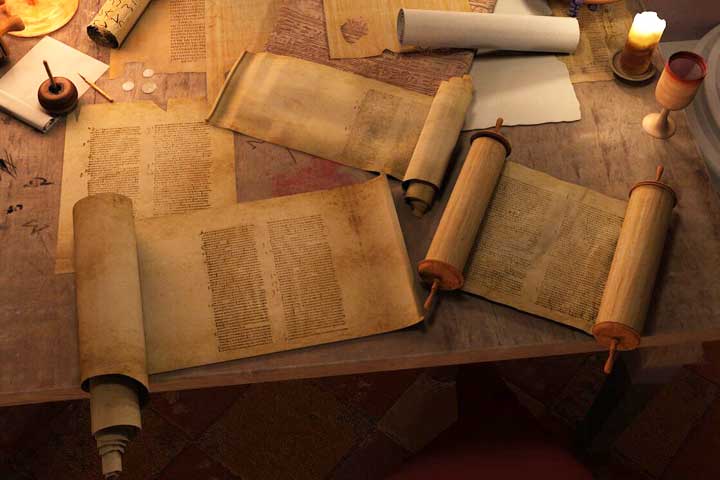
RECOMMENDED LINKS
The Proto-Language
Indo-European Proto-Language
Indo-Scythians
Indo-Parthians
Ariana
misanthropistsArmens
Iran (Aryan)
The Secret in the Bible
The Greek Qabalah
![]()
![]()
![]()
![]()
Disclaimer:
Some material presented will contain links, quotes, ideologies, etc., the contents of which should be understood to first, in their whole, reflect the views or opinions of their editors, and second, are used in my personal research as "fair use" sources only, and not espousement one way or the other. Researching for 'truth' leads one all over the place...a piece here, a piece there. As a researcher, I hunt, gather and disassemble resources, trying to put all the pieces into a coherent and logical whole. I encourage you to do the same. And please remember, these pages are only my effort to collect all the pieces I can find and see if they properly fit into the 'reality aggregate'.
Personal Position:
I've come to realize that 'truth' boils down to what we 'believe' the facts we've gathered point to. We only 'know' what we've 'experienced' firsthand. Everything else - what we read, what we watch, what we hear - is what someone else's gathered facts point to and 'they' 'believe' is 'truth', so that 'truth' seems to change in direct proportion to newly gathered facts divided by applied plausibility. Though I believe there is 'truth', until someone representing the celestial realm visibly appears and presents the heavenly records of Facts And Lies In The Order They Happened, I can't know for sure exactly what "the whole truth' on any given subject is, and what applies to me applies to everyone. Until then I'll continue to ask, "what does The Urantia Book say on the subject?"
~Gail Bird Allen
![]()
![]()








-
Urantia Book, 44:0.11 - The Celestial Artisans
Never in your long ascendancy will you lose the power to recognize your associates of former existences. Always, as you ascend inward in the scale of life, will you retain the ability to recognize and fraternize with the fellow beings of your previous and lower levels of experience. Each new translation or resurrection will add one more group of spirit beings to your vision range without in the least depriving you of the ability to recognize your friends and fellows of former estates.
-
Princess Bride 1987 Wallace Shawn (Vizzini) and Mandy Patinkin (Inigo Montoya)
Vizzini: HE DIDN'T FALL? INCONCEIVABLE.
Inigo Montoya: You keep using that word. I do not think it means what you think it means. -
Urantia Book, 117:4.14 - The Finite God
And here is mystery: The more closely man approaches God through love, the greater the reality -- actuality -- of that man. The more man withdraws from God, the more nearly he approaches nonreality -- cessation of existence. When man consecrates his will to the doing of the Father's will, when man gives God all that he has, then does God make that man more than he is.
-
Urantia Book, 167:7.4 - The Talk About Angels
"And do you not remember that I said to you once before that, if you had your spiritual eyes anointed, you would then see the heavens opened and behold the angels of God ascending and descending? It is by the ministry of the angels that one world may be kept in touch with other worlds, for have I not repeatedly told you that I have other sheep not of this fold?"
-
Urantia Book, Foreword - 0:12.12 - The Trinities
But we know that there dwells within the human mind a fragment of God, and that there sojourns with the human soul the Spirit of Truth; and we further know that these spirit forces conspire to enable material man to grasp the reality of spiritual values and to comprehend the philosophy of universe meanings. But even more certainly we know that these spirits of the Divine Presence are able to assist man in the spiritual appropriation of all truth contributory to the enhancement of the ever-progressing reality of personal religious experience—God-consciousness.
-
Urantia Book, 1:4.3 - The Mystery Of God
When you are through down here, when your course has been run in temporary form on earth, when your trial trip in the flesh is finished, when the dust that composes the mortal tabernacle "returns to the earth whence it came"; then, it is revealed, the indwelling "Spirit shall return to God who gave it." There sojourns within each moral being of this planet a fragment of God, a part and parcel of divinity. It is not yet yours by right of possession, but it is designedly intended to be one with you if you survive the mortal existence.
-
Urantia Book, 1:4.1 - The Mystery Of God
And the greatest of all the unfathomable mysteries of God is the phenomenon of the divine indwelling of mortal minds. The manner in which the Universal Father sojourns with the creatures of time is the most profound of all universe mysteries; the divine presence in the mind of man is the mystery of mysteries.
-
Urantia Book, 1:4.6 - The Mystery Of God
To every spirit being and to every mortal creature in every sphere and on every world of the universe of universes, the Universal Father reveals all of his gracious and divine self that can be discerned or comprehended by such spirit beings and by such mortal creatures. God is no respecter of persons, either spiritual or material. The divine presence which any child of the universe enjoys at any given moment is limited only by the capacity of such a creature to receive and to discern the spirit actualities of the supermaterial world.
-
Urantia Book, 11:0.1 - The Eternal Isle Of Paradise
Paradise is the eternal center of the universe of universes and the abiding place of the Universal Father, the Eternal Son, the Infinite Spirit, and their divine co-ordinates and associates. This central Isle is the most gigantic organized body of cosmic reality in all the master universe. Paradise is a material sphere as well as a spiritual abode. All of the intelligent creation of the Universal Father is domiciled on material abodes; hence must the absolute controlling center also be material, literal. And again it should be reiterated that spirit things and spiritual beings are real.
-
Urantia Book, 50:6.4 - Planetary Culture
Culture presupposes quality of mind; culture cannot be enhanced unless mind is elevated. Superior intellect will seek a noble culture and find some way to attain such a goal. Inferior minds will spurn the highest culture even when presented to them ready-made.
-
Urantia Book, 54:1.6 - True And False Liberty
True liberty is the associate of genuine self-respect; false liberty is the consort of self-admiration. True liberty is the fruit of self-control; false liberty, the assumption of self-assertion. Self-control leads to altruistic service; self-admiration tends towards the exploitation of others for the selfish aggrandizement of such a mistaken individual as is willing to sacrifice righteous attainment for the sake of possessing unjust power over his fellow beings.
-
Urantia Book, 54:1.9 - True And False Liberty
How dare the self-willed creature encroach upon the rights of his fellows in the name of personal liberty when the Supreme Rulers of the universe stand back in merciful respect for these prerogatives of will and potentials of personality! No being, in the exercise of his supposed personal liberty, has a right to deprive any other being of those privileges of existence conferred by the Creators and duly respected by all their loyal associates, subordinates, and subjects.
-
Urantia Book, 54:1.8 - True And False Liberty
There is no error greater than that species of self-deception which leads intelligent beings to crave the exercise of power over other beings for the purpose of depriving these persons of their natural liberties. The golden rule of human fairness cries out against all such fraud, unfairness, selfishness, and unrighteousness.

